Looking for a specific solution?
Drive Transformation Across Your Organization
AI-Powered Automation
- AI suggests and creates end-to-end workflows in seconds.
- Continuous learning refines steps as data grows.
- Conversational prompts create rules, tasks, alerts.
- Human tweaks via visual editor when needed.
Unified Data
- Eliminate silos with fully relational data model.
- Real-time dashboards sync metrics across modules.
- Consistent fields ensure clean, comparable reporting.
- APIs keep external systems perfectly aligned.
Operational Efficiency
- AI executes routine steps without manual clicks.
- Drag-and-drop tunes flows for edge cases.
- Real-time insights surface bottlenecks immediately.
- Fewer meetings, shorter cycles across teams.
Scalable Solutions
- Add new entities in minutes—no code required.
- Multi-language UI supports instant global expansion.
- Modular licensing means you pay only for need.
- Robust API handles high-volume integrations gracefully.
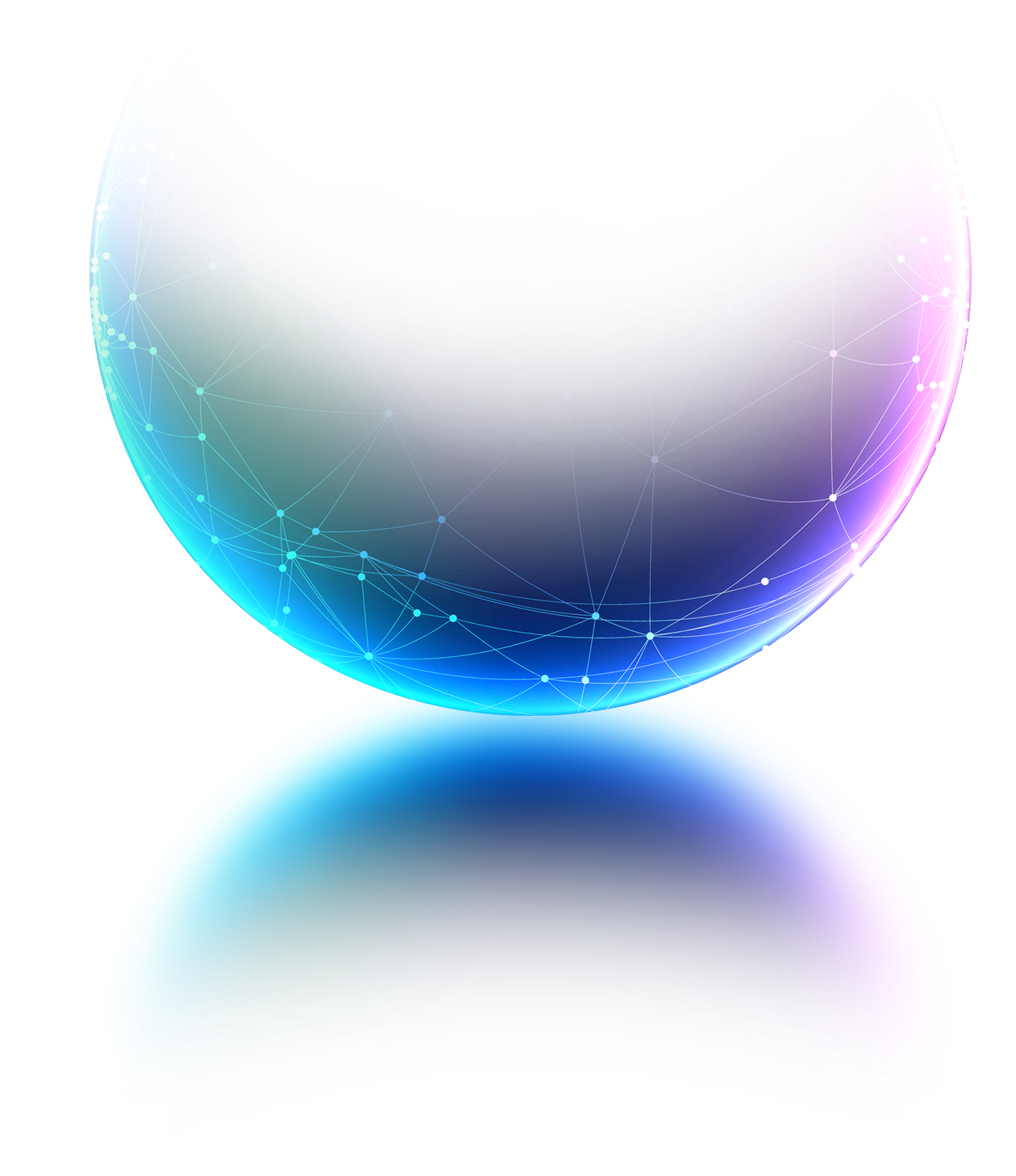
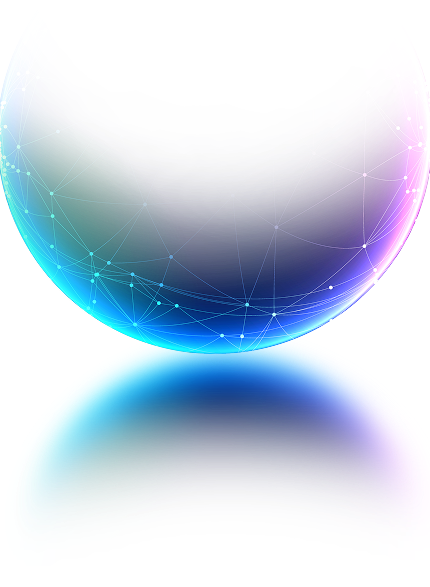


Let the numbers speak for them self's
0
0
0
0
0
0
0
A Few Words from Happy Clients
Optimize Your Workflows with Smart Features
Smart Permissions Management
Webforms
Omnichannel Communication
E-Documents & E-Signatures
BI & Reporting
Smart Automation & Workflow
AI-Enhanced Workflows
Multi-Language Support

Smart Permissions Management

Webforms

Omnichannel Communication

E-Documents & E-Signatures

BI & Reporting

Smart Automation & Workflow
AI-Enhanced Workflows

Multi-Language Support
Use Cases
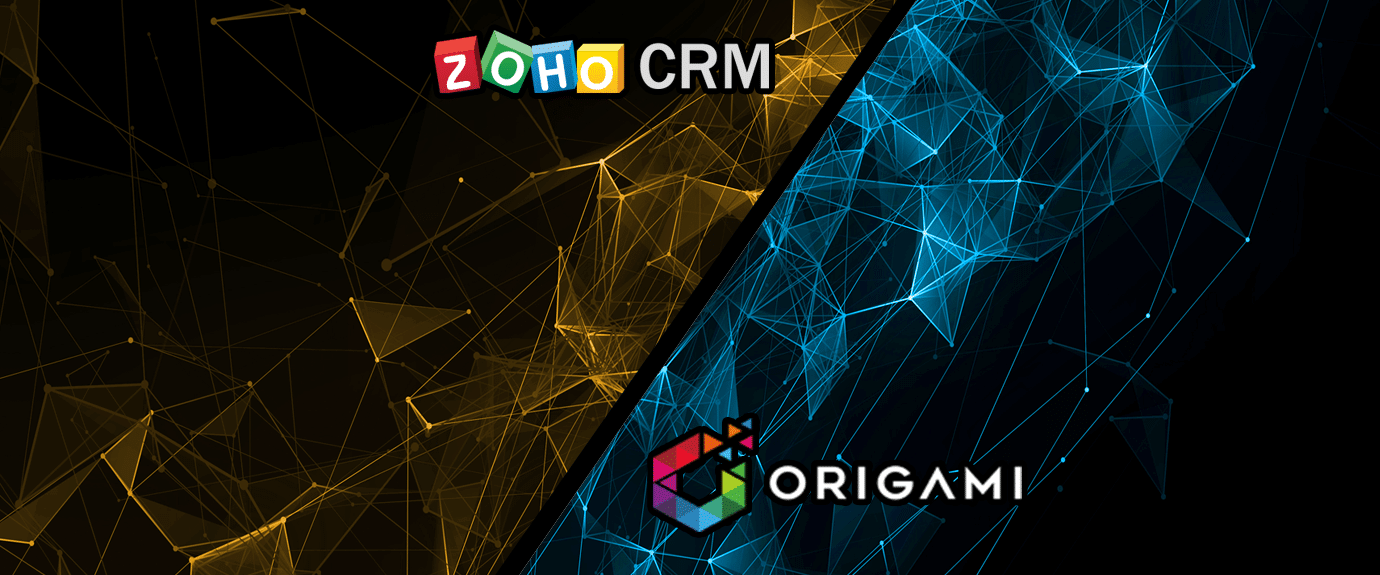
How Does Origami’s ERP System Differ From Zoho ERP? – A Detailed Analysis
How Does Origami’s ERP System Differ From Zoho ERP? – A Detailed Analysis
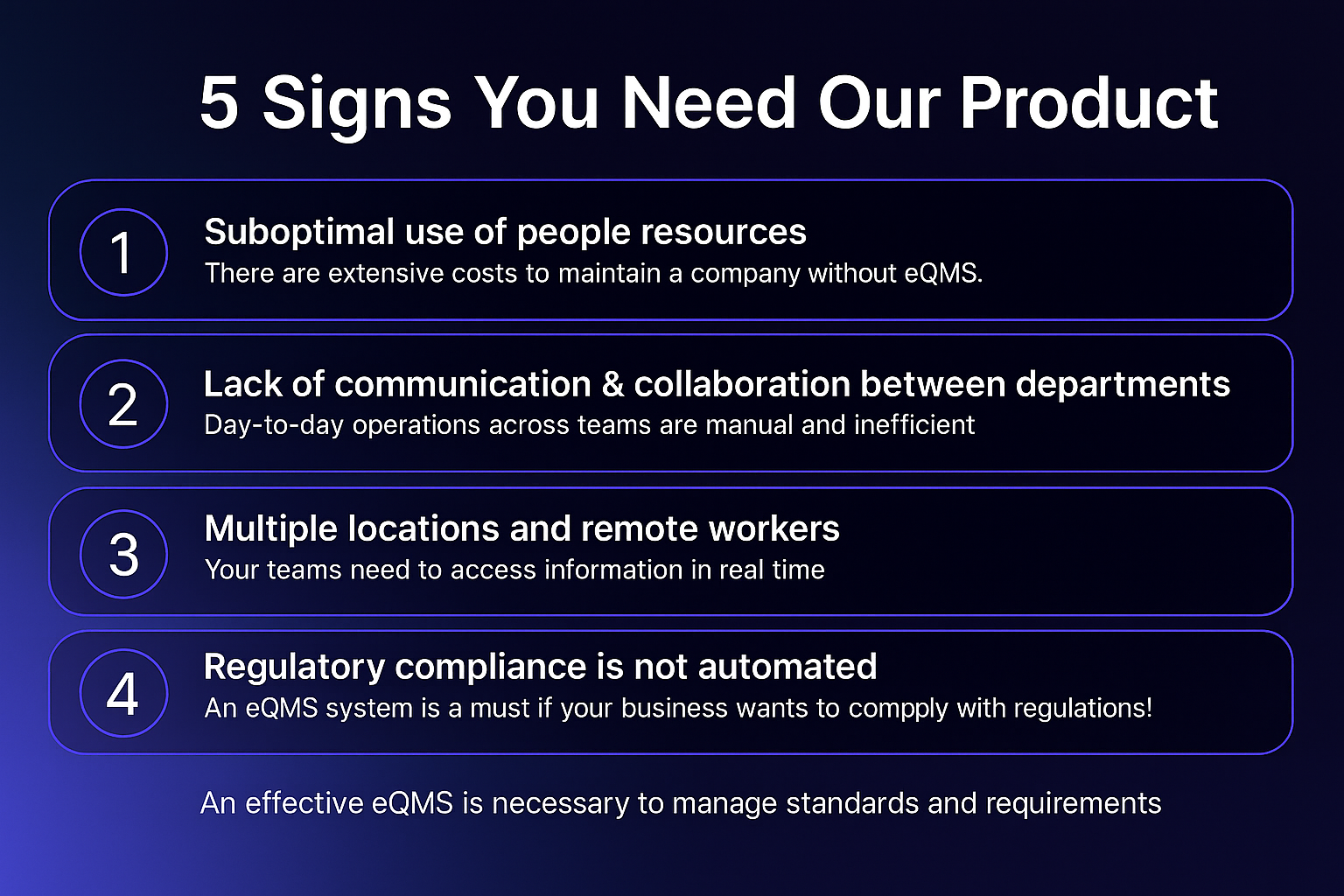
5 Signs You Need Our Product
5 Signs You Need Our Product
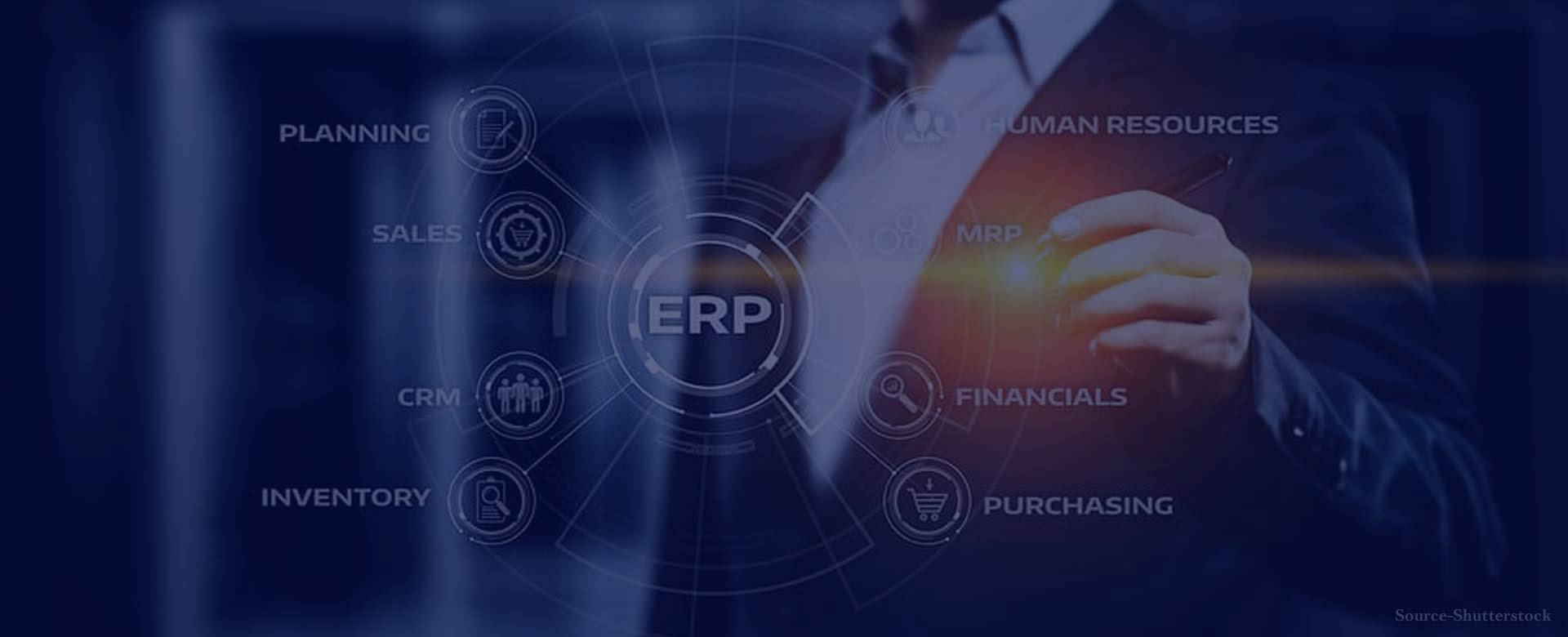
How to Easily Create a Tailored ERP For Your Organization
How to Easily Create a Tailored ERP For Your Organization

Best Alternative To Existing Project Management Software
Best Alternative To Existing Project Management Software
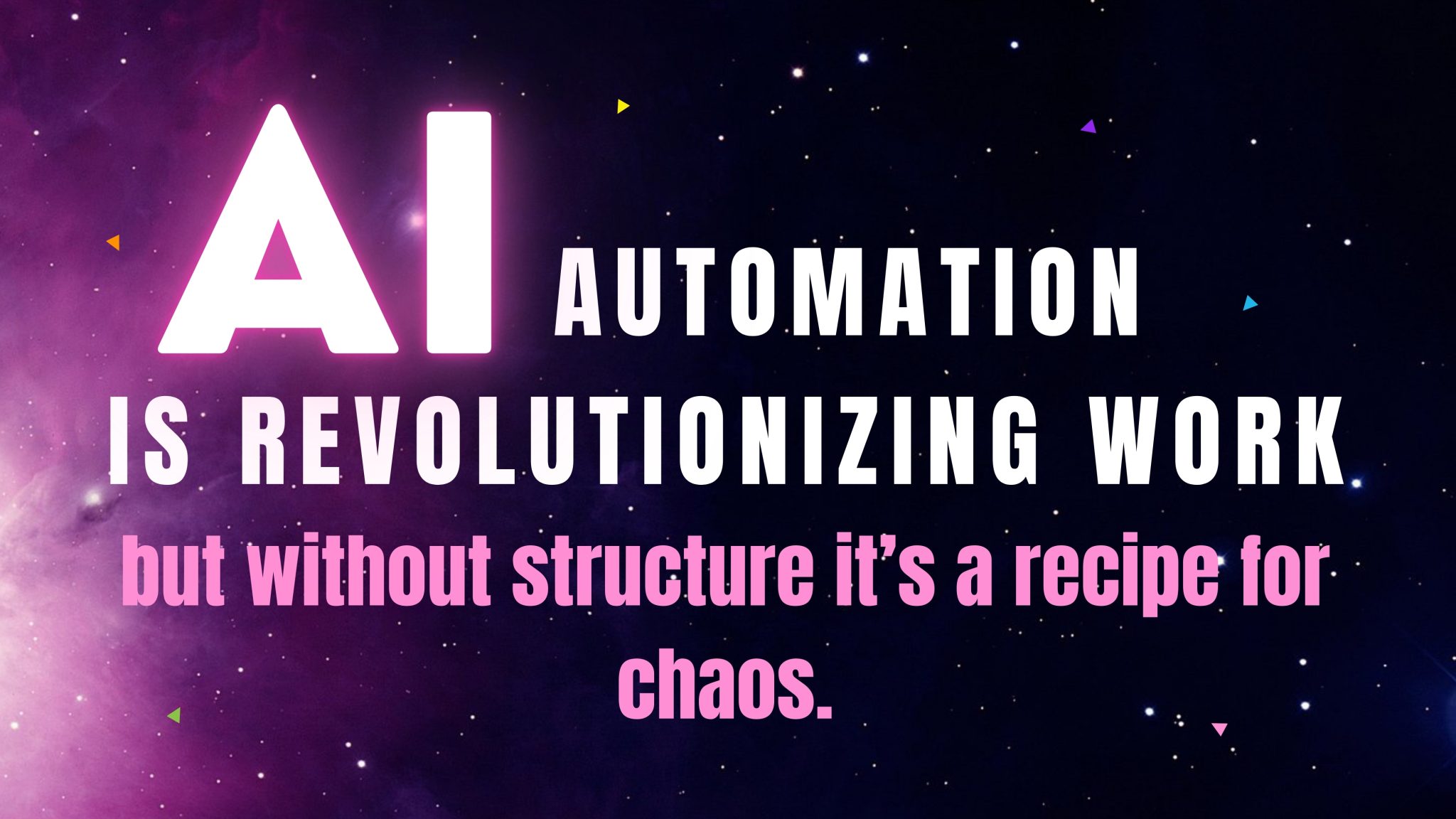
Why AI Automation Still Needs Structure – The Case for Centralized Platforms Like Origami
Why AI Automation Still Needs Structure – The Case for Centralized Platforms Like Origami

Origami is the (missing) link in your company’s growth
Origami is the (missing) link in your company’s growth

2021 Medical Device Trends
2021 Medical Device Trends

How Can You Get The Best Out Of Your Teams While Working Remotely?
How Can You Get The Best Out Of Your Teams While Working Remotely?
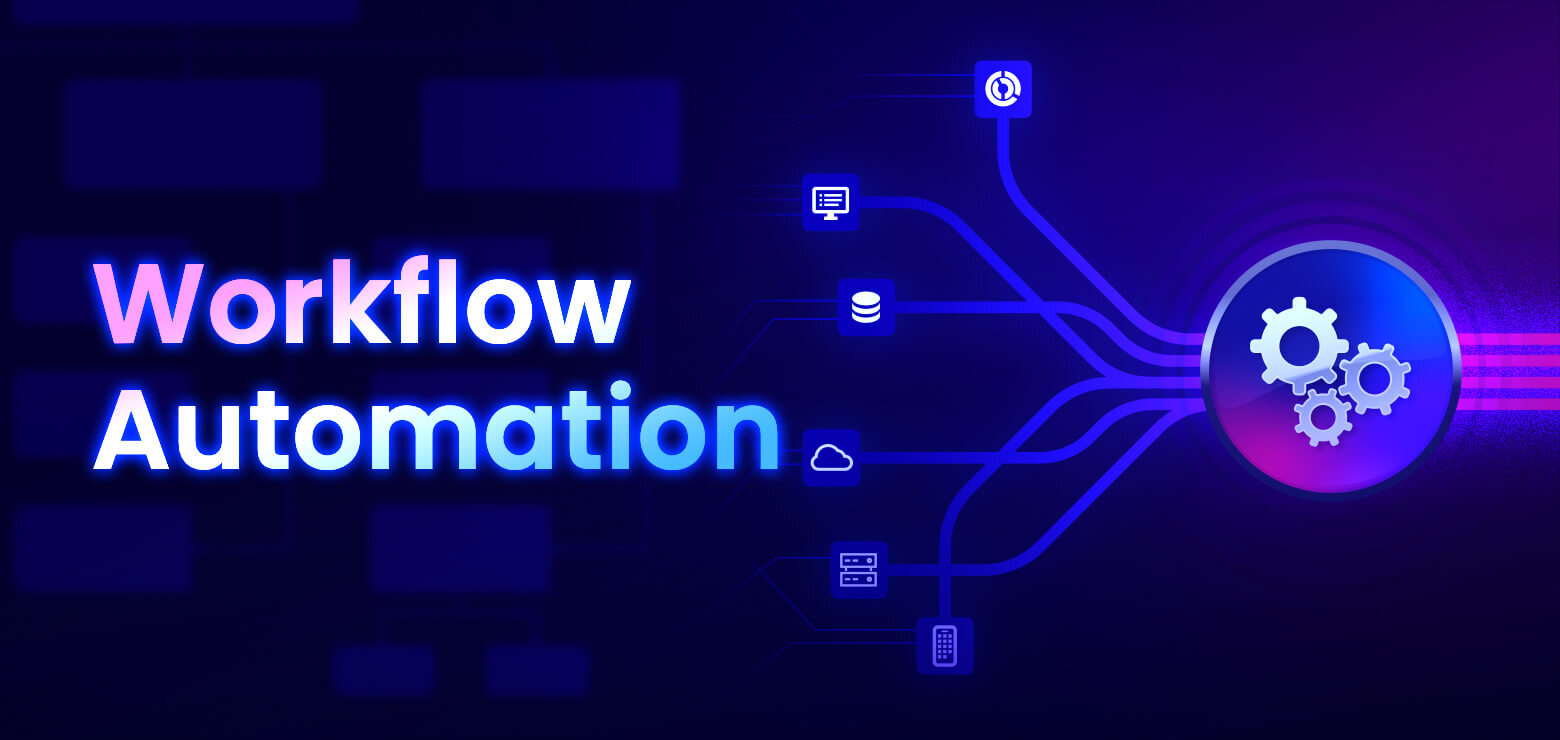
The Best Workflow Management Software And Their Features
The Best Workflow Management Software And Their Features
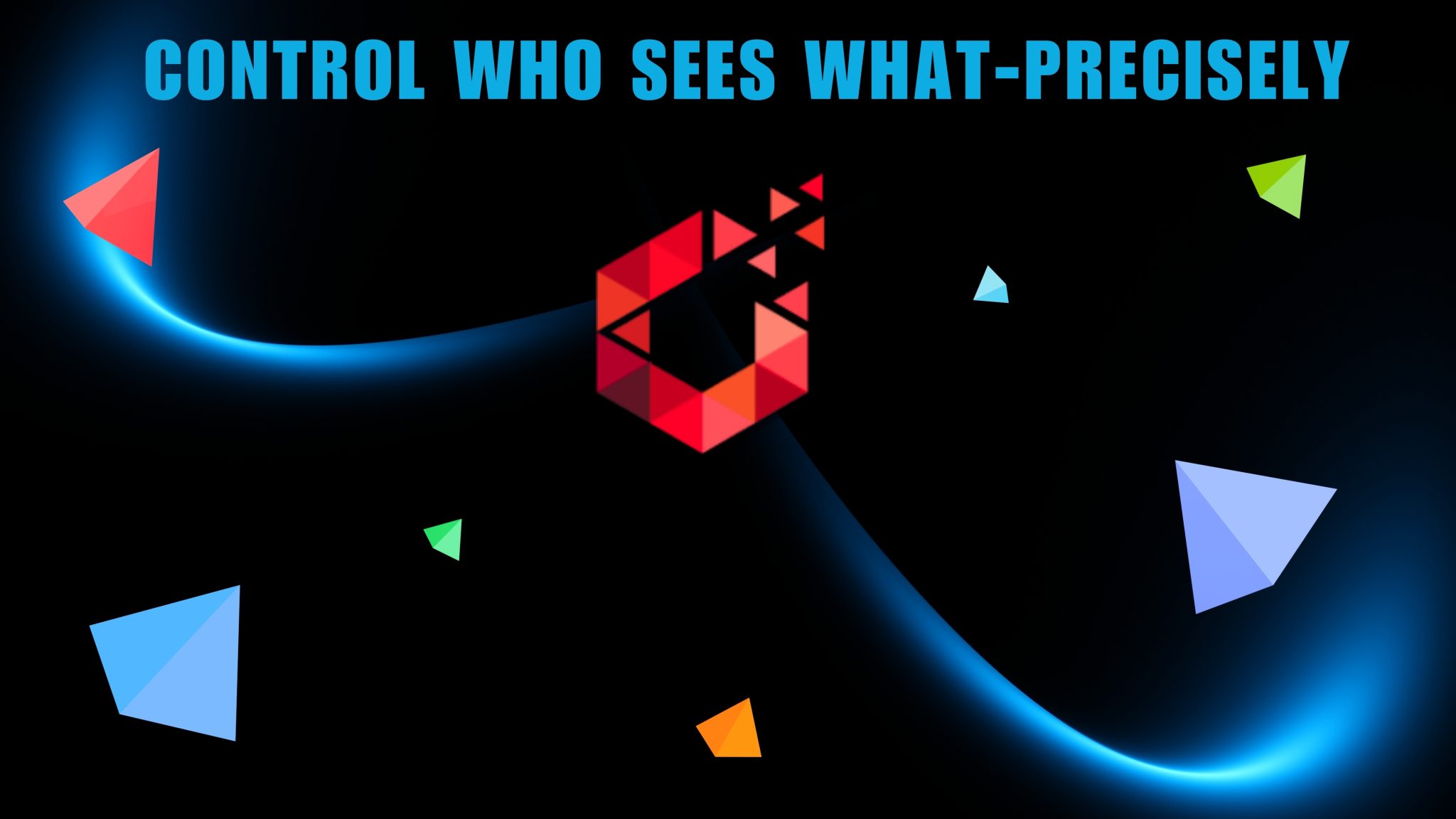
Origami’s Smart Permissions
Origami’s Smart Permissions
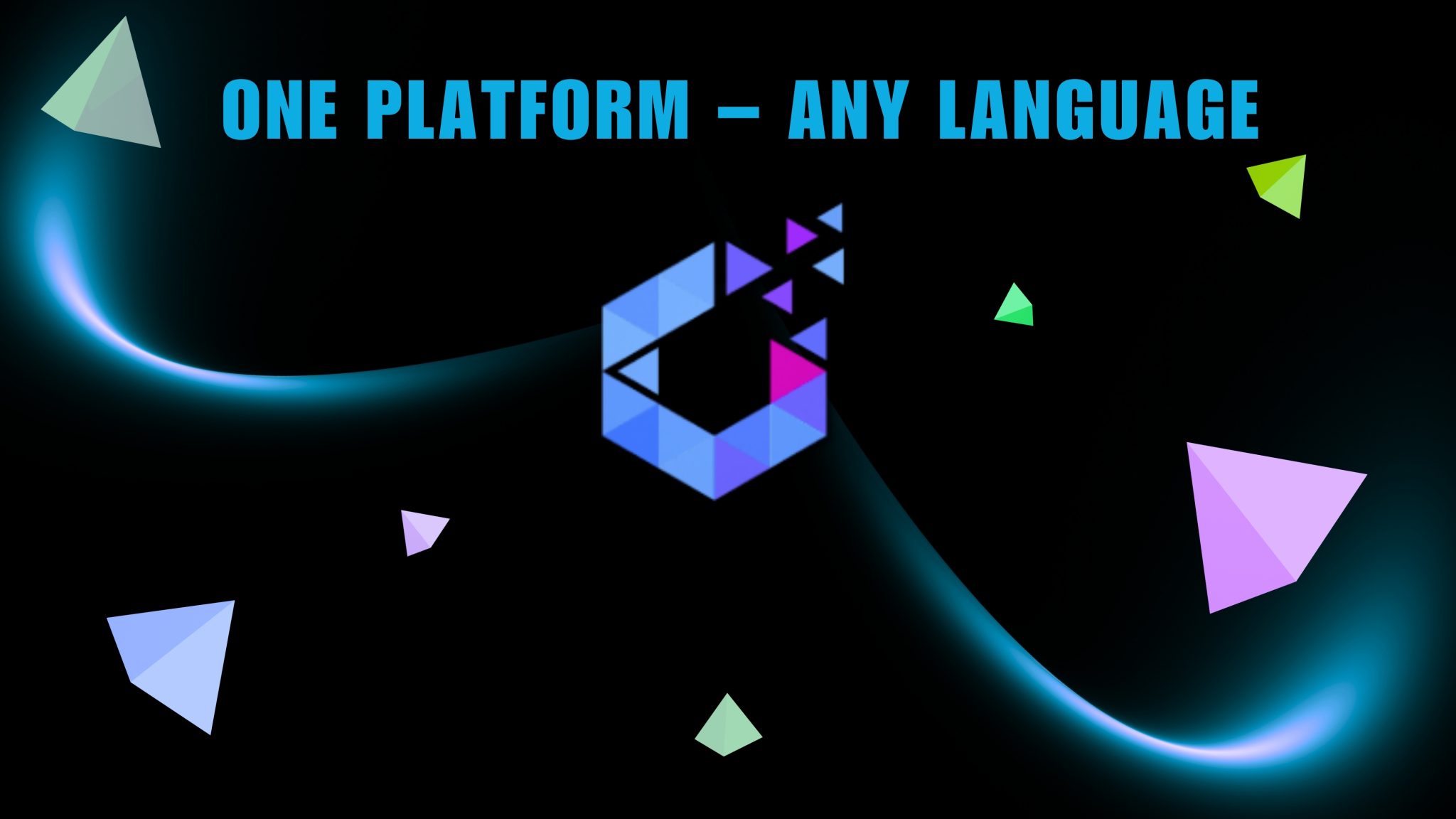
Origami’s Multilingual Support
Origami’s Multilingual Support
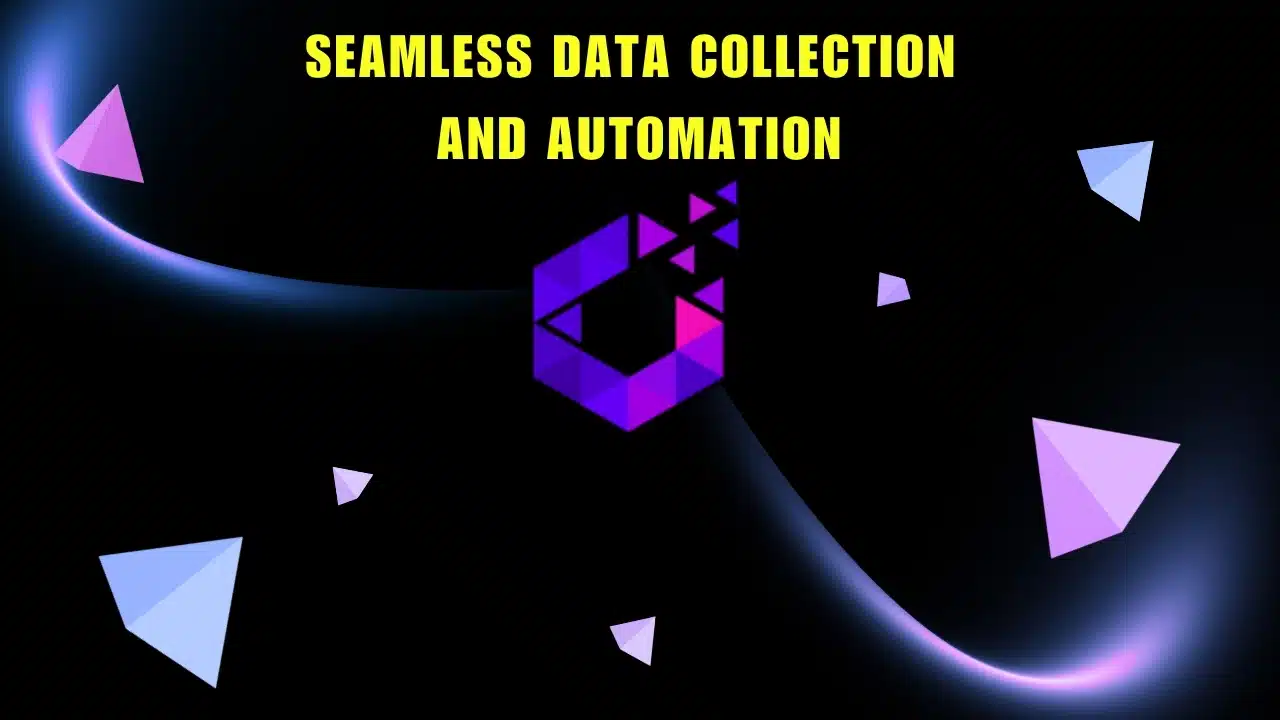
Origami’s Smart Webforms
Origami’s Smart Webforms
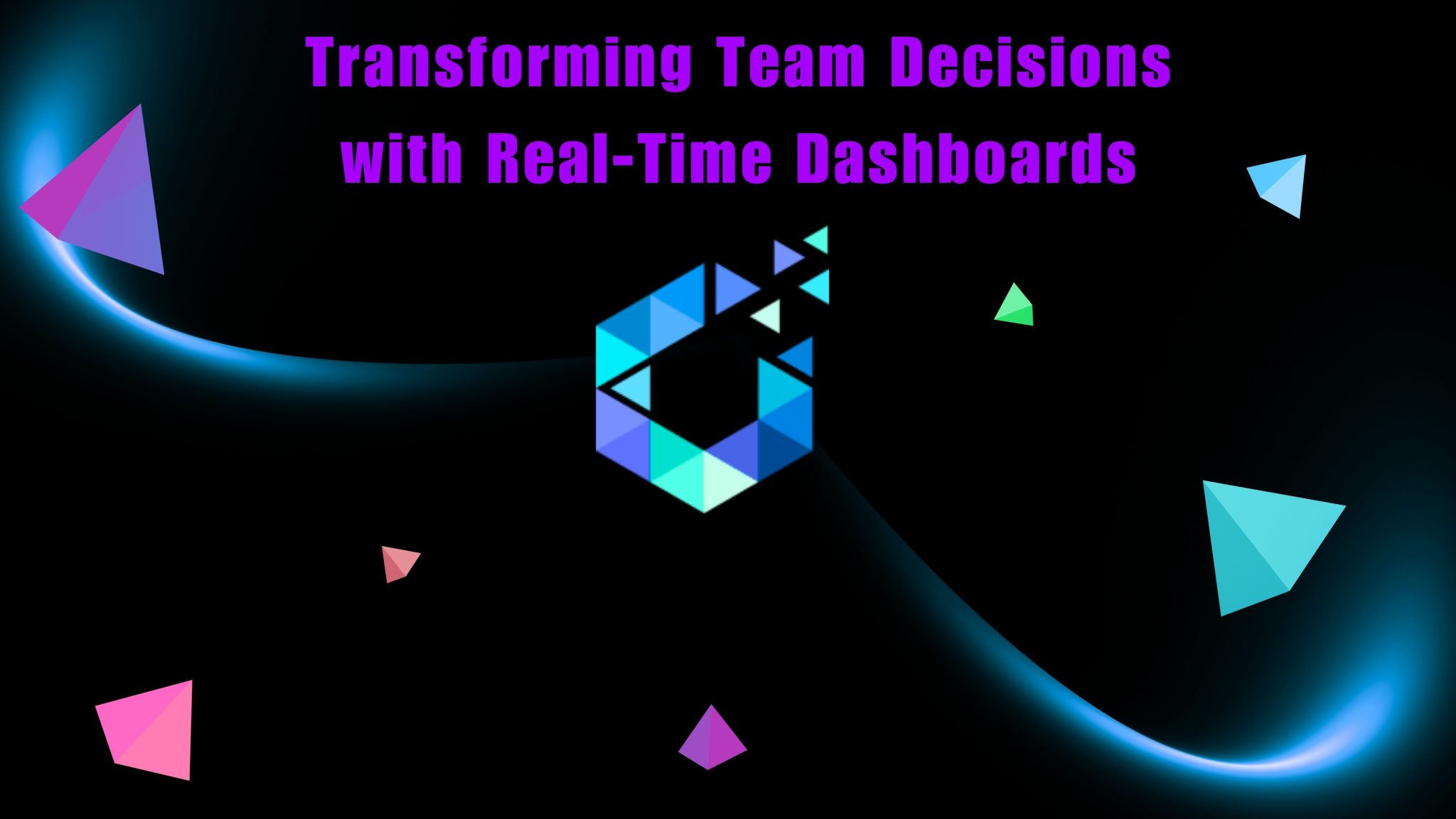
Origami’s Dashboards
Origami’s Dashboards
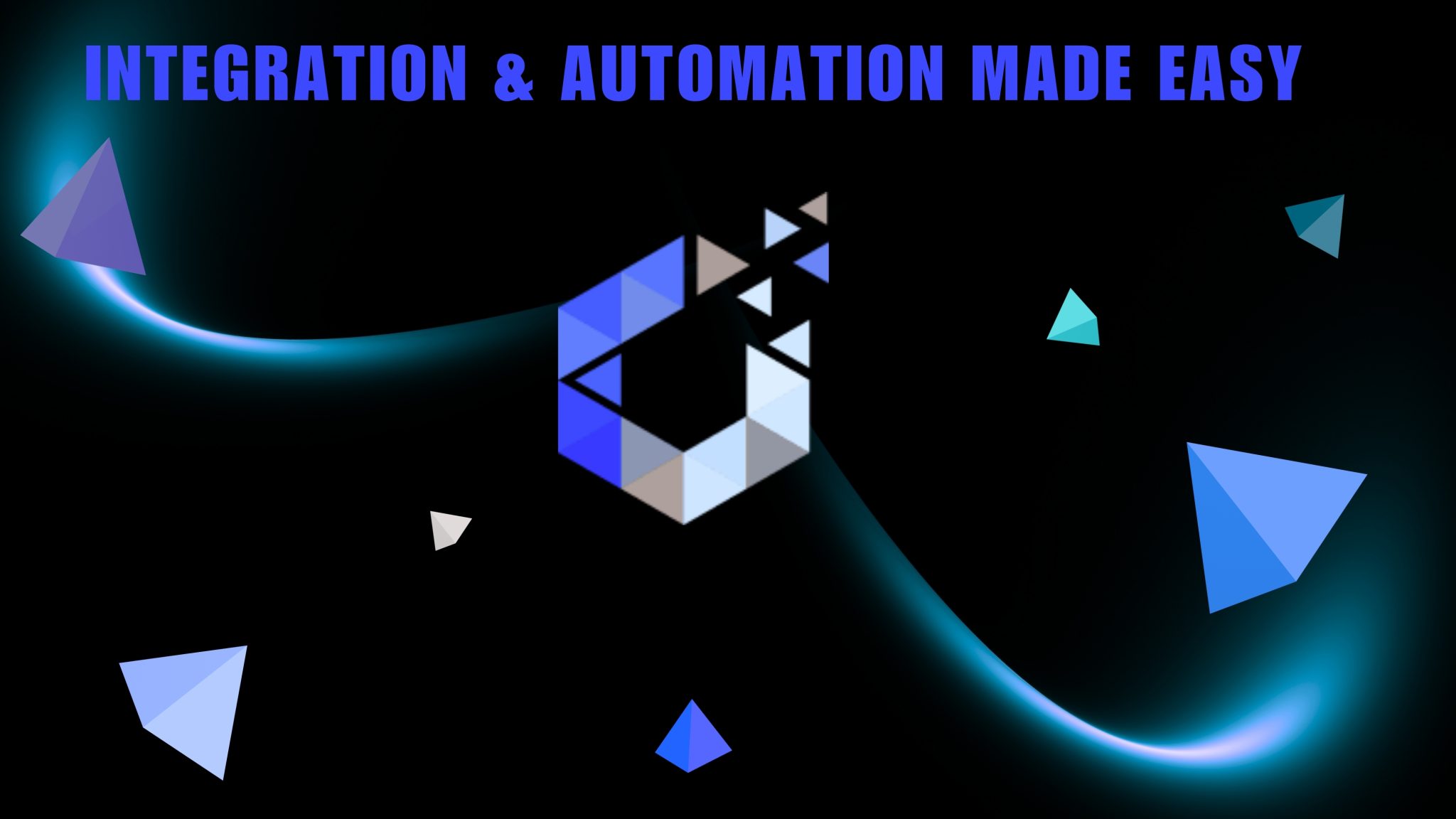
Origami’s Integration Capabilities: Streamlining Processes and Enhancing Workflow Efficiency
Origami’s Integration Capabilities

Do I need no-code business software?
Do I need no-code business software?
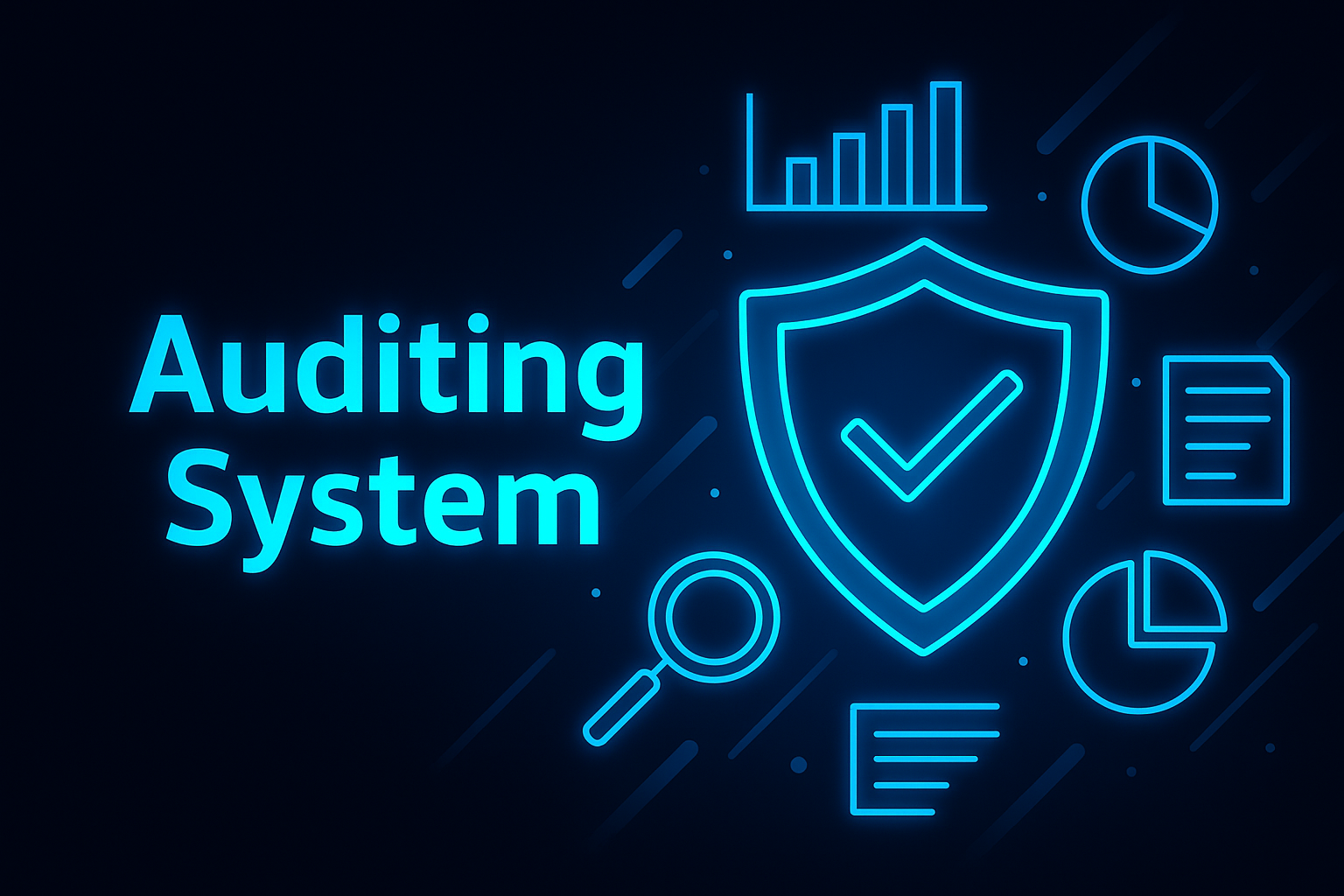
Auditing System
Auditing System
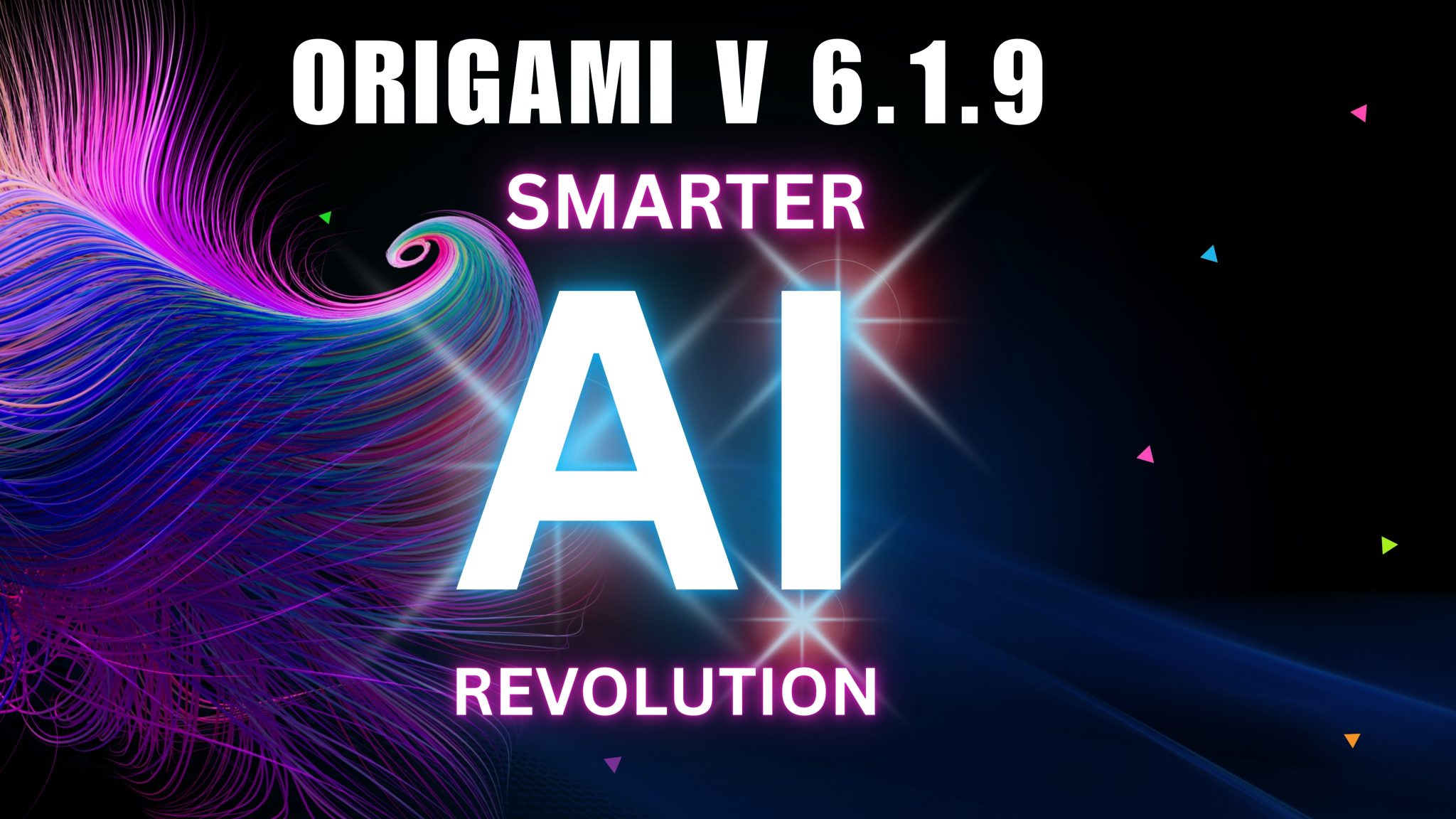
Origami Ver. 6.1.9
Origami Ver. 6.1.9

Origami Ver. 6.1.5
Origami Ver. 6.1.5

Origami Ver. 6.1.4
Origami Ver. 6.1.4

Origami Ver. 6.1.3
Origami Ver. 6.1.3

Origami Ver. 6.1.2
Origami Ver. 6.1.2

How Does Origami’s ERP System Differ From Zoho ERP? – A Detailed Analysis
How Does Origami’s ERP System Differ From Zoho ERP? – A Detailed Analysis
Used by businesses that work within a supply chain, ERP systems optimize the business functions in a centralized and automated manner. The Zoho ERP system is extremely popular among small and medium business enterprises for its low-code, time, and cost-cutting software solution that helps you to quickly develop and deploy automated workflows, and other integrations with a drag-and-drop interface.
Zoho has gained instant popularity across the globe, and helps small and medium enterprises to easily migrate from legacy systems while maintaining data security on a cloud backup at all times. Zoho allows accessing all information on a centralized application where you can integrate third-party vendors, payment gateways, and so on. With enhanced order visibility and inventory tracking, it is indeed an affordable ERP solution for small and medium enterprises.
* But, do enterprises wish to remain small and medium forever?
* As an enterprise grows in strength and scale, leveraging its workforce and other resources, will Zoho be able to scale up its features too?
* Will this low-cost ERP solution that offers entry-level features extend to suit the needs of a large-scale enterprise?
These are questions that you need to ponder into.
Zoho Creator is a solution that Zoho claims to enable the creation and launching of customized apps easily. But if you check out how to create apps on Zoho Creator, you will understand that there are layouts from which you can choose and create an app accordingly. You cannot customize from scratch and have to stick to the available layouts. Likewise, Zoho’s other releases too do not allow customization from scratch and are indeed difficult to work with.
Origami is a platform that redefines customization. Allowing you to create anything that your enterprise needs from scratch, the way you want it to look and work, Origami originally caters to the largest of enterprises. And we are trying to make this all-feature inclusive, highly-customizable, and scalable platform available to the smaller players too with which they can build any information management system- be it, project management, workflow management, ERP, CRM, you name it, Origami allows it! Being an API-based platform, it is easy to integrate any system that you build with third-party software that you may be using currently.
If Zoho caters to small and medium enterprises, it would be right to call Origami a complete enterprise-level solution with which you can build any information management system at a low cost.
While Zoho and many of the existing ERP solutions have limited scalability, Origami is for a lifetime. You can add endless customizations, integrate them into the centralized system, and get them working on the go without the need for running code. If the drag-and-drop approach literally could have a zenith, it is in Origami. Zoho is a low-coding method. It would be apt to call Origami a no-coding method.
We, at Origami, help enterprises to dream big. With a pragmatic approach to delivering top-notch ERP solutions, let your enterprise grow from small to medium, and medium to large in no time!

5 Signs You Need Our Product
5 Signs You Need Our Product
These days, manufacturers get ahead of competitors and gain market share by rapidly introducing high quality customer-driven products. You are constantly being asked to rapidly increase customer satisfaction, while simultaneously lowering process and product costs, with existing people resources.
Therefore, a quality leader has to utilize internal quality team resources effectively, meet customers expectations, improve internal efficiencies, do more with existing resources, and easily comply with legal requirements as your organization scales.
The following are signs which show that your organization definitely need an electronic quality management system (eQMS)!
1. Suboptimal use of people resources
There are extensive costs to maintain a company without eQMS. With the traditional QMS, the time of the employees gets invested in managing the documents and files. Without an eQMS, a company cannot focus on its core objectives and activities, and therefore, this may increase its expenses.
2. Lack of communication & collaboration between departments
When an organization doesn’t have an eQMS, day to day operations across teams are manual and inefficient. Quality processes such as updating documented information, non-conforming product root cause, investigations, corrective actions, managing risk, require collaboration across teams. Our eQMS quality management system plays a critical role in linking various departments of your organization in order to collaborate to improve quality.
3. Multiple locations and remote workers
The modern workforce requires employees from all over the world, in various office locations, and those who work from home, to collaborate. Our eQMS ensures that your teams access information in real-time, fostering teamwork and transparency, as colleagues anywhere in the world collaborate on quality processes.
4. Regulatory compliance is not automated
An eQMS system is a must if your business wants to comply with regulations! Being compliant can be a challenge for any company. Not only do you need to bring in an auditor, you need an easy way to keep the auditor focused on the processes and products that are in scope of the audit. . Our eQMS includes automated compliant processes and granular per-record permission, enabling an auditor to swiftly audit without your organization’s other products or processes being included in the audit, causing unnecessary confusion.
5. Lack of integration of various systems
Over time, the number of systems, tools, and spreadsheets to track the business’s quality processes tends to grow. There is an addition of different approaches to fill the requirements of a business, and it is the responsibility of a company to manage the growth of other systems. Because of the lack of integration, the efficiency is reduced, and additional costs are incurred, which include infrastructure fees, IT staff, and an increase in the volume of helpdesk activity.
Conclusion
Every organization works to standards, be it the regulatory or the internal expectations or requirements. In order to manage these, an effective eQMS is necessary, and therefore, Origami has been helping organizations to achieve their quality and operational excellence. Having users worldwide, Origami can help your organization become more effective, streamlined, and gain a competitive advantage because our platform is so agile, it can provide the adjusted framework for any organization and that uniqueness will be reflected in our eQMS, all while demonstrating conformance to standards.

How to Easily Create a Tailored ERP For Your Organization
How to Easily Create a Tailored ERP For Your Organization
Every business starts with great planning and research. But way too often, they end up never reaching the vision it was built with. Statistics reveal that only 30% of all business enterprises – small, medium, or large-scale, survive to celebrate their tenth anniversary. Two of the most prominent reasons for a business failure are lack of capital to invest and run the business and poor management.
An ERP ( Enterprise Resource Planning) system is essential to regulate and optimize all processes that determine the sustainability of an enterprise. It is a business management software that can be web-based or used as an app to manage the operational processes within an enterprise.
So, here we categorize ERP systems into three:
1. Ready-made legacy ERP solutions
- SAP
One of the most efficient and recognized ERP systems across the globe, the versatile modules, and top-notch operational management have contributed to its popularity. But priced on a higher side of $420 per user per month, it may not be affordable for all.
- NetSuite
Another popular ERP system is the Oracle-owned NetSuite. The highlight of NetSuite being its accounting management efficiency, it is also expensive at $99 per user and $999 for the base license monthly.
- Sage Itacct
Popular with E-commerce providers and other large organizations, Sage Intacct is known for its accounting and reporting features. Prices start from $9000 for a yearly subscription.
2. Custom-made ERP systems
However, most businesses these days look forward to developing an ERP system on their own. And here are the reasons:
- Dedicated modules
No two businesses are similar in functioning. Then how can a ready-made ERP solution manage every business equally well?
Developing a custom ERP system lets you place modules that you need and make them accessible only to departments that would need them.
- Easy maintenance
It’s an in-house team that has developed the system. So it is a cakewalk for them to maintain it as well.
- Syncs with your workflow
Buying a ready-made legacy ERP system might require you to change the operations of your business to suit the new system. But when it is custom-made, it is built according to your operations and workflow, thereby integrating directly into your system.
But how can you develop such a system?
Let us look into the stages of building a custom ERP system:
- Identify your needs.
The foremost reason for opting for a custom-made ERP solution rather than off-the-shelf ones was because you wanted modules specific to your operation and workflow. So, list out your needs and define modules clearly.
- Come up with a design.
Now comes the technical part of preparing a blueprint of how you visualize your system to be.
- Start wireframing.
Next is the step-by-step process involved in developing the ERP system by identifying the resources needed, fixing deadlines, and budgets.
- Choose the right technology
This involves making decisions about the tools you would like to use for hosting, the programming language for coding, and most importantly a reliable database for storing the data.
- Integrate the new system with existing infrastructure
- Test ERP implementation
And finally, review the new system for its functionalities, security, and integrations. This may require you to assign teams to test each module.
The next question that arises is how much will it cost to build a custom ERP solution?
Depending on the modules and framework of the system you plan to develop, and the number of users and functionalities, it can cost you from $20,000 up to millions.
Now, what if you have an option to own a custom ERP solution without going through all the long and tedious processes above-mentioned at a cost that is nearly 75% lesser? What if you do not need to assign a team to develop a custom ERP system, you need no coding and no testing at all? What if you get an ERP system that easily integrates with your existing infrastructure?
That is our third option. One that has never been introduced ever before!
3. Origami
Origami stands true to its name. Just like how a piece of paper is transformed into a finished sculpture, the Origami approach to ERP system development is complete in every sense. Agile, scalable, and super-easy to implement with its API driven interface and drag-and-drop approach, Origami is the new answer to efficient business management.
Allowing you to customize any number of times without running code, displaying dashboards like how each user wants to view it, and getting to work on the go, Origami is like no other.

Best Alternative To Existing Project Management Software
Best Alternative To Existing Project Management Software
A project tracking system helps you to recognize all the tasks needed for the successful completion of a project within deadlines. It provides an automated interface to plan, organize, and manage resource tools and develop resource estimates.
Trello is a Kanban-based list management system that is used as a collaboration tool the world over. With its simple method of putting projects onto boards, the tasks and teams are visible at a glance. But with very few templates, there often arises the need to rely on extensions for different views, time tracking, invoicing, etc, that can increase your budget considerably.
Trello has also been found to be slow to load and sends email notifications long after a task has been changed on cluttered boards.
So, many organizations are on the lookout for alternatives to Trello.
What are the features that Trello does not provide?
As many think, Trello is not a traditional project tracking system. It is a Kanban based app that manages work and workflows with fully customizable boards. Thus Trello would be a bad choice for large projects.
Although Trello is termed free, its inability to offer views other than Kanban (for eg: Gantt charts), lack of time tracking and work-in-progress limits, lack of billing and invoicing features, and more, causes the need to install Power-ups which often come at a high price.
What are the disadvantages of Trello?
1. Trello is not for all.
As mentioned earlier, the Kanban method may not be the ideal system for all types of projects. It works well for simple projects, smaller teams, and straightforward schedules. However, a complex project with larger teams may find Trello limiting.
2. Visibility constraints
Providing only a Kanban board view, it can show status view and priority view of a project separately. But it cannot show both at once. Large projects often look for better alternatives to Trello owing to its limitations in providing enhanced visibility.
3. Inability to show task dependencies
Only a Gantt chart view can show task dependencies which are inevitable to project scheduling, tracking of tasks, and coordination. Trello’s Kanban only view is a major setback here.
4. Lack of agility
Agile teams may not function well with Trello as it lacks the support to make daily stand-ups easier, review iterations, or create roadmaps.
5. Lack of time tracking, expense tracking, and reporting functionalities.
There are better alternatives to Trello that come packed with all these features and more.
6. Communication and integration limitations
The lack of in-built messaging systems and generic import tool takes a toll on smooth overall project communication.
Trello vs Origami
Origami is a complete project tracking system of which Trello is only a small part of. An agile project tracking system with powerful collaboration tools and enhanced visibility with different views such as Table, Kanban, Gantt, Calendar and Map, Origami is much more than a stand-alone list management system such as Trello.
Origami is not stand-alone software. It is an agile and highly scalable platform where you can integrate Trello, CRM, or any project management tool with a simple drag and drop interface and everything is visible in one place. The endless possibilities that Origami can grant to your complex projects and your organization, make Origami different from a whole lot of stand-alone project tracking solutions available currently.

Why AI Automation Still Needs Structure – The Case for Centralized Platforms Like Origami
Why AI Automation Still Needs Structure – The Case for Centralized Platforms Like Origami
Picture this: Your team’s buzzing with excitement over a new AI agent that promises to streamline workflows—think automated customer follow-ups or real-time project updates. You plug it into Slack, hook it up with Zapier, and sprinkle in some ChatGPT magic. A week later, you’re drowning in duplicate tasks, missing data, and a compliance headache because the AI pulled the wrong info from a siloed spreadsheet. Sound familiar?
AI is a game-changer, no doubt. But here’s the catch: it’s only as good as the structure it’s built on. Without a centralized platform to keep everything in check, even the smartest AI can turn into a liability. That’s where tools like Origami come in—a no-code powerhouse that acts as the backbone for data governance, automation orchestration, and AI-readiness. Let’s unpack why, in this era of advanced automation, structure isn’t just nice to have—it’s non-negotiable.
The Hidden Cost of Fragmented Automation
Businesses today are like kids in a candy store with AI tools: Slack bots for notifications, Zapier for quick integrations, ChatGPT plugins for on-the-fly answers. It’s fast, it’s flexible, and it feels like progress—until it isn’t. Fragmented systems lead to fragmented results. Sales sees one version of a customer record, support sees another, and your AI agent? It’s guessing half the time, risking errors or worse, compliance slip-ups.
Take a healthcare provider automating patient intake. An AI chatbot might nail the conversation, but if it’s pulling from disconnected sources—one database for appointments, another for patient history—it could double-book slots or miss critical HIPAA-protected data. The result? Chaos that costs time, trust, and potentially legal penalties.
This is where centralized platforms like Origami shine. With its modular entities and records, you get a single source of truth. Data stays consistent, permissions stay tight (down to the field level!), and your AI knows exactly where to look. No more guesswork—just results.
AI Doesn’t Replace Structure – It Thrives on It
There’s a myth floating around: AI is so smart it can “figure things out” without much help. The reality? AI agents—like ChatGPT or multi-modal assistants—need clean, organized data to avoid hallucinations or bad decisions. Think of AI as a brilliant chef: it can whip up a masterpiece, but only if the kitchen’s stocked with the right ingredients, labeled, and ready to go.
Origami sets the table perfectly. Its visual workflow automation lets you define triggers (e.g., “new lead added”), conditions (e.g., “priority = high”), and actions (e.g., “send SMS to sales manager”). Add in ChatGPT integration, and you’ve got AI populating fields or prioritizing tasks—all within a secure, structured environment. For example, a marketing team could use Origami to track campaign leads, with AI suggesting follow-up actions based on real-time data, all logged for accountability. Structure doesn’t stifle AI; it supercharges it.
Origami: The Central Brain for Scalable Automation
Imagine Origami as your organization’s automation command center. Its granular permissions mean only the right people see the right data—think a sales rep editing a lead’s status but not its budget field, reserved for managers. Custom views (Kanban for projects, maps for logistics) keep teams aligned, while external API support pulls live data into records—like stock levels or weather updates—keeping AI decisions current.
A project management use case paints the picture: Tasks live in an entity, linked to a project record via instance relations. An AI workflow spots a missed deadline, updates the status, and notifies the team—all tracked in Origami’s audit log. Compare that to a patchwork of tools where updates get lost between Trello and email. Origami ties it together, scaling automation without the mess.
Why AI-Native Doesn’t Mean Chaos
“AI-native” is the buzzword du jour—tools built from the ground up with AI in mind. But native doesn’t mean standalone. As autonomous agents evolve (think process managers juggling schedules or assistants drafting contracts), they’ll need a centralized hub to read/write data safely and collaborate with humans. Origami’s webforms, dashboards, and reporting tools bridge that gap, letting AI interact with structured inputs while humans stay in the loop.
Consider a retail chain rolling out an AI-driven inventory bot. Without a platform like Origami, it might over-order stock based on outdated sales data from a random CSV. With Origami, the bot taps into a centralized entity, validates stock levels via API, and triggers a restock workflow—human-approved, of course. Chaos averted, efficiency gained.
The Future: AI and Centralized Platforms Go Hand-in-Hand
Here’s the forward-looking truth: by 2025, AI agents will handle more complex tasks—multi-modal decisions, cross-department workflows, you name it. But they’ll falter without a structured backend. Origami’s not just keeping up; it’s paving the way. Its no-code design means non-techies can build workflows, while its robust features (data validation, conditional UI, audit trails) ensure AI plays nice with compliance and scale.
For business leaders, this is the takeaway: AI automation isn’t about replacing structure—it’s about leveraging it. Platforms like Origami turn fragmented experiments into cohesive strategies, making your organization AI-ready without the growing pains.
Conclusion: Structure Is Your Competitive Edge
AI’s potential is limitless, but only if you give it the foundation to succeed. Centralized platforms like Origami aren’t relics of the past—they’re the key to scalable, secure, and responsible automation. Whether you’re a startup juggling growth or an enterprise taming complexity, structure isn’t a burden; it’s your edge. Ready to see how Origami can transform your automation game? Dive in and take control—because even the smartest AI needs a steady hand.

Origami is the (missing) link in your company’s growth
Origami is the (missing) link in your company’s growth
There’s decades of evidence, research, literature, and experiences from our own lives which tells us that companies that understand and deliver on customer satisfaction have better outcomes1 than those that do not.
You need happy customers that want to buy or use your company’s products.
Let’s review how to build customer satisfaction into your company’s processes from the beginning.
When your company plans new services or products, there are assumptions that the needs and wants of your customers will be addressed by what your company develops.
In this stage, your company sets business objectives and decides on performance indicators, many of which relate to customer satisfaction. The system that is used to capture objectives and performance indicators is your company’s Quality Management System (QMS).
A product or service is then created by establishing processes to buy material, manufacture, test, ship, and improve. The system that is used at this stage is your company’s QMS.
In a B2B company, sales captures customer expectations in your company’s Customer Relationship Management (CRM) system.
If this sounds familiar, your company may not be operating as effectively as possible.
What do we mean?
With separate CRM and eQMS, data about customer commitments is accessible to sales but not to other stakeholders. It’s expensive, often laborious and slow, to obtain information from your CRM. Customer expectations can get missed, leading to complaints or loss of a customer.
With connected CRM and eQMS, data about customer commitments is accessible to other stakeholders. After investing in mapping between systems and an integration, it’s possible for customer expectations to be shared with other stakeholders. This approach helps your company respond to customer complaints, and is an improvement over separate systems and data.
With CRM and eQMS on the same business platform, customer expectation information flows freely from sales to other stakeholders before commitments are made. Your company prevents misalignment between expectations and your solutions by planning how to deliver to customer expectations. Sales better manages the customer relationship by accessing issues and risks in the CRM, that originated in the QMS. This is a truly customer-centric approach to planning satisfaction across your company.
Whether your company has one or 10,000 customers, understanding and delivering to expectations is key to satisfaction.
With Origami eQMS + CRM platform, your company builds customer satisfaction into your processes so you can retain and grow customer relationships. Reduce the costs and impacts of dissatisfied customers with our out of the box solution.

2021 Medical Device Trends
2021 Medical Device Trends
Medical devices can improve the living standards of the patients by monitoring any changes in the chronic conditions outside the office visits. In recent years, we have seen various critical innovations that have significantly impacted the medical industry.
Medical device trends to keep an eye on
Not all the fields are as innovative or impactful as technology and healthcare, where we can see discoveries daily. When both technology and healthcare come together, there is an endless opportunity for life-changing innovations. The following are the medical device trends that you should watch out for.
- Telemedicine and telehealth
There is a lot of potential in a trending area of healthcare, i.e., telemedicine and telehealth. Though both of these may sound familiar, there are some differences. Telehealth can cover the broader scope of remote healthcare services, which include non-clinical services, like administrative meetings, pieces of training, and medical education, in addition to all the clinical services.
As compared to telehealth, telemedicine refers to remote clinical services. With the help of telemedicine, healthcare can be cost-effective, more accessible, and increase patient engagement.
- Wearable health devices
Several wearable health monitoring devices have become quite a notable trend among people. Nowadays, people want to monitor their health, and they would like to do a little more than just counting their steps.
With mobile devices and technology, people are comfortable tracking their health-related information, which includes oxygen consumption, heart rate, and body fat ratio. When it is about healthcare, they go for more personalized options, which is why health-tech companies innovate new products to keep up with this increasing demand.
- Artificial intelligence
Artificial intelligence is nothing new, but this technology is advancing faster than ever. Healthcare is being transformed with AI and machine learning as it is being used to diagnose different diseases, health conditions, identify trends, and create efficiencies in the research laboratory.
There is a great potential for AI and machine learning to offer more personalized medicine and targeted treatments for patients. There is a set of guidance introduced to encourage innovation in developing digital health tools.
- Extended reality
There was a time when virtual reality used to be only for video games and movies. The extended reality, which includes virtual reality, augmented reality, and mixed reality, has successfully found a place in healthcare. Research shows that by 2025, the global market for virtual and augmented reality will grow to $11.4 billion.
Typically, virtual reality is used during psychological therapy and shows promise in treating depression, eating disorders, and post traumatic disorders. These treatments help the patients to learn that the threats they perceive are not dangerous, so their reactions become appropriate for the situation.
Why Choose Origami
Origami is a platform that allows its users to create information management systems in a seamless way that is unique to the organization. It is designed to provide solutions to organizations of all sizes and industries to build an enterprise-level system that reduces costs, increases productivity, offers a competitive advantage by helping enterprises prepare for EU MDR.

How Can You Get The Best Out Of Your Teams While Working Remotely?
How Can You Get The Best Out Of Your Teams While Working Remotely?
The COVID-19 pandemic and the associated social isolation has brought the world to a standstill. Organizations of all scales- multinationals, large, medium, and small scale, the world over have transitioned into a new method of working. Due to the transition from the structured and constantly monitored office environment to the quarantine of their homes spanning across different locations, there arises the need to improve communication and collaboration between team members.
When it comes to working with remote teams, it can get hard to stay on top of things and move everything forward in an orderly manner, while employees tend to get laid back and overlook deadlines.
Agile project management technologies that can swiftly shift from your regular modus operandi to working from home are much in demand. The core of such technologies being focused on:
- Communication
Group or individual chats, video conferences, and message boards help the team to share ideas that pop up on the go. Progress updates can be monitored and reminders can be set by the project manager to the entire team.
- Collaboration
With a detailed remote team dashboard, the project manager assigns weekly schedules and people to each task. The login time recording, optional screenshot capturing, keyboard, and mouse activity monitoring can ensure people are not simply slacking off while working from home!
- Timelines and deadlines
A time-tracking solution is what enterprises are looking for to make sure no time is going waste.
A ‘battery’ –model showing the percentage of work done by individual members of a team helps the project manager to track where things stand.
- Project budgets
A cloud-based project management solution with its project budgeting feature automatically notifies you if an employee is about to reach their maximum allowed time that may lead to the going overboard with the budget. Suitable adjustments or task re-assignments can be done accordingly.
- Team engagement
A typical office environment builds a sense of ‘belonging’ to the team where everyone sees each other. But with remote working, establishing transparency, trust, and feeling empowered under leadership could face a setback. Project management software for enterprises need to focus constantly on ensuring the entire team knows what they are aiming for and how they are going to achieve those goals at all times.
Origami is here to help. As it has always believed in developing simple solutions with a drag-and-drop interface, to help you quickly transition into a new system in no time, our cloud-based PMS solution is no different.
Origami has it all
With the entire enterprise using a single platform to showcase project due dates, team priorities, and scheduled tasks are crystal clear. A view of multiple projects that are currently running or an insight into the status of any individual project- enhanced visibility is assured with Origami.
Tools that make it possible
Remote work spread across a bunch of apps can lead to nothing but chaos. Origami combines all the tools needed for communication, collaboration, scheduling, and team engagement in one place. It also allows third-party integrations when the need comes up for a project.
Stay aligned with organized workflow
By managing your work, feedback, and requests in one place, it becomes easier to send status updates on completed tasks, new initiatives, and blocked projects.
Docs, files, images, and spreadsheets can be organized under folders at one place which aids quick sharing.
Change is the only constant. Get your organization to embrace the change to efficient remote working with a pragmatic PMS solution from Origami.

The Best Workflow Management Software And Their Features
The Best Workflow Management Software And Their Features
Every business needs some tools to manage and automate its business processes, known as their workflow. And they are on the lookout for low-coding workflow management software so that they are easily accessible and seamlessly integrate with the third-party applications they use.
Here is an analysis of some of the best workflow management software adopted by businesses across the world.
1. FLOKZU
Flokzu is a collaborative tool to automate workflows between people and teams in an organization. Highly recommended for high-performance businesses and consultants, Flokzu comes with an easy to use drag-and-drop interface. However, Flokzu users experience problems in integrating into their accounting software and SAP, for which they need to depend on web services.
2. bpm’online
bpm’online is designed for customization and comes with a highly interactive user interface. bpm’online is a 3-product suite and is more of a CRM tool than a workflow management tool. One major disadvantage of bpm’online is that you need to purchase one or more products. You cannot buy individual modules.
3. ProcessMaker
ProcessMaker is a highly affordable workflow management tool designed for approval-based workflows. Its low overhead, light, and efficient approach and easy-to-use drag-and-drop approach make it extremely popular. But it is not made for complicated workflows. Also, reporting needs plugins that come at an additional cost.
4. Nintex
Nintex is used for optimizing processes, integrating content, and establishing seamless collaboration between teams. Its people-friendly design and flexible pricing options make it equally preferred by small, medium, and large scale businesses. But again, Nintex also faces issues in integrations with other applications. It is also not easy to work with for non-developers.
5. Kissflow
Compared to the other workflow management tools, Kissflow uses a low-coding approach to make it friendly to non-developers to define workflows. It offers a simple visual interface with KPIs, personalized dashboards, and reporting facilities. But again, Kissflow is similar to many other tools as it is made only for simple workflows. It falls flat when the complexities increase. There are integration limitations too.
6. Origami
Last but not least is Origami, a power-packed platform that helps you build any information management system, not just workflow.
Origami gives new dimensions to customization-you can build any system the way you want it to look like, right from scratch. And you can build it with absolutely no knowledge about coding. Simply drag and drop and you have a system made only for you- no matter how complex a workflow you may be having. You don’t purchase ready-made software from Origami, but you build it yourself on the all-encompassing platform that is Origami. So it is tailored to suit your needs and has all the capabilities that you need and none that you don’t.
All aforementioned software tools had integration issues. Origami, owing to its API-based interface allows integrating with anything and to anything. When you have access to the Origami platform, either you choose to utilize its unending potentialities or build just what is needed and end up paying accordingly. We have highly affordable plans for you to choose from.
Define workflows, establish collaboration between teams, integrate with third-party applications, visualize data, and get reports in the best of ways with Origami workflow management.

Origami’s Smart Permissions
Origami’s Smart Permissions
Origami’s Smart Permissions system allows for robust and dynamic access control based on user groups and user roles, providing fine-grained control over what different users can view, edit, or delete within the system. Here’s a breakdown of how the permissions work:
1. User Groups and Roles
- User Groups are defined in the system settings under User Management.
- Users can belong to multiple groups, and for each user, you can define whether they are an administrator of specific user groups or individuals within those groups.
- Inherited Permissions: If a user is defined as an administrator of a group, they inherit tOrigami’s Smart Permissions system allows for robust and dynamic access control based on user groups and user roles, providing fine-grained control over what different users can view, edit, or delete within the system. Here’s a breakdown of how the permissions work:
- the permissions of the users within that group.
2. Permission Levels at the Entity Hierarchy
- The permission settings start at the entity level (highest in the hierarchy) and offer various access controls. The key permission levels are:
- Full Permission: Users can create, delete, view, and edit everything.
- View Only: Users can only view the data.
- Edit and View: Users can view and edit the data.
- Full Permission to Owner Instance: Users can create, delete, and edit only the records they have created.

3. Team Permissions
- There’s an additional checkbox for team permissions: when enabled, users can be granted view only or edit and view permissions based on their inclusion in the assigned user fields.
- A team can be defined so that users can only see records relevant to them (e.g., a user can see only data related to their team).
4. Field-Level Permissions
- Moving down the hierarchy, field permissions are inherited from the user group, but they can be customized.
Permissions on fields can include view only, edit and view, or team-based permissions.
5. Widget Permissions
- Widgets in the system are configurable to define which user groups can see them.
- The information displayed in the widget is filtered based on the permissions of the user accessing it. This ensures users only see data they are allowed to interact with.
6. Conditional Permissions
- Choice Boxes (single or multiple selections): Permissions can be defined based on the possible values in the choice fields.
- By doing so, permissions can be granted or restricted based on specific selected values in a field.
7. Data Export and Reports
- Any data shown to the user, including reports and exports, is governed by the user’s permissions.
- If a user does not have permission to view certain records, those records will not be displayed in reports or exports.
8. API Permissions
- For API access, the user must authenticate with a username and API SECRET KEY.
The API permissions are controlled based on the user’s permissions. A user must be an active user within the system for their permissions to apply to API requests.

This system ensures that permissions are granular and dynamic, allowing flexible control of who can do what within the system. By using user groups, team permissions, and field-level permissions, businesses can tightly control access to sensitive data, ensuring that the right people have the right level of access to perform their tasks.

Origami’s Multilingual Support
Origami’s Multilingual Support
Multilanguage Support in Origami
Origami offers robust support for multiple languages, allowing users to tailor the platform to their linguistic preferences. Here’s how it works:
Supported Languages
Origami supports the following default languages: English, Hebrew, Spanish, French, Dutch, Mandarin, Arabic, Portuguese, German, Russian, Japanese, Italian, Hindi, Bengali, Korean, Turkish, Vietnamese. These languages are pre-set and generally visible to system administrators, ensuring broad accessibility across global users.
Translation feature
While the default system languages are provided, Origami offers a translation feature that allows users to export the entire system interface, including widget names, field values, and other system texts. This data can be translated externally and re-imported into the system. By doing so, users can enable their desired language interface, with the system adapting to display translated terms wherever possible.
- What gets translated?
- System elements such as widget names, field values, and UI text are translated.
- User input data, such as a name entered in Hebrew, will not be translated. The field label will be translated, but not the actual content entered by users.
- How does it work?
- After translating the exported content, users can import the file back into the system.
- Only the values within the translation file are modified, so the system remains clean and organized.
- Any untranslated field will remain in the original language (e.g., English), ensuring consistency.
RTL and LTR Language Support
The system detects whether a language is Right-to-Left (RTL) or Left-to-Right (LTR) based on the input text. Accordingly, the system’s layout and flow will automatically adjust to accommodate languages like Arabic or Hebrew, ensuring an intuitive user experience.
Multilanguage Support in Origami
Origami offers robust support for multiple languages, allowing users to tailor the platform to their linguistic preferences. Here’s how it works:
Supported Languages
Origami supports the following default languages: English, Hebrew, Spanish, French, Dutch, Mandarin, Arabic, Portuguese, German, Russian, Japanese, Italian, Hindi, Bengali, Korean, Turkish, Vietnamese. These languages are pre-set and generally visible to system administrators, ensuring broad accessibility across global users.
Translation feature
While the default system languages are provided, Origami offers a translation feature that allows users to export the entire system interface, including widget names, field values, and other system texts. This data can be translated externally and re-imported into the system. By doing so, users can enable their desired language interface, with the system adapting to display translated terms wherever possible.
- What gets translated?
- System elements such as widget names, field values, and UI text are translated.
- User input data, such as a name entered in Hebrew, will not be translated. The field label will be translated, but not the actual content entered by users.
- How does it work?
- After translating the exported content, users can import the file back into the system.
- Only the values within the translation file are modified, so the system remains clean and organized.
- Any untranslated field will remain in the original language (e.g., English), ensuring consistency.
RTL and LTR Language Support
The system detects whether a language is Right-to-Left (RTL) or Left-to-Right (LTR) based on the input text. Accordingly, the system’s layout and flow will automatically adjust to accommodate languages like Arabic or Hebrew, ensuring an intuitive user experience.
Challenges and Considerations
- Choosing a Language: Users have the option to select the language they wish to use from the available translations. The system will display content in the chosen language, provided it has been translated. If a user selects a language that has not been fully translated, the untranslated sections will appear in the default language.
- Flexibility for Multiple Languages: If a user translates certain fields into different languages (e.g., one field in Hindi, another in Yiddish), these multiple languages can be visible, but the user ultimately controls which language is displayed in the interface.

Origami’s Smart Webforms
Origami’s Smart Webforms
Origami Web Forms: Streamline Data Collection with Seamless, Secure Forms Introduction
In today’s fast-paced digital environment, organizations need efficient, user-friendly tools to collect data—whether from clients, partners, or internal teams.
Origami Web Forms offer a powerful, no-code solution to build and share customized forms that feed directly into your system’s workflows.
From service requests to incident reporting and beyond, Web Forms provide the bridge between your users and your data.
🔍 What Are Web Forms in Origami?
Origami Web Forms are publicly accessible forms designed to collect information from users outside the system, without requiring login access. Each form is based on an entity and tied to a specific view, ensuring data is captured and structured automatically.
Whether you’re collecting applications, feedback, or incident reports, Web Forms ensure a smooth, branded, and secure user experience.
Key Benefits
No-Code Configuration
Create and publish forms without a single line of code. System administrators can easily choose which fields to include, configure validations, and control the user experience through intuitive settings.
Public Access, Controlled Entry
Each form is available through a secure, shareable URL. You decide which fields are visible and what data is collected—Origami takes care of permissions and system integration.
Seamless System Integration
Every submitted form creates a new record in Origami in real-time, automatically triggering relevant workflows, automations, or review processes.
Branded, Responsive Experience
Customize your forms to match your brand. Origami Web Forms are mobile-friendly and optimized for modern, accessible design.
Secure and Compliant
Built-in CAPTCHA, field-level validation, and audit logging keep submissions secure. Data is stored directly in your system, ensuring consistency and compliance.
🧱 Form Pages & Sections: A Better Way to Organize
Origami Web Forms support multi-page forms and sectioned layouts, giving you full control over how information is presented and experienced.
- Pages break the form into individual steps or screens, improving user focus and flow. For example:
- Page 1: Contact Details
- Page 2: Business Information
- Page 3: Confirmation & Declarations
- Page 1: Contact Details
- Sections divide each page into labeled, collapsible blocks of related fields—ideal for grouping data logically and making complex forms easier to complete.
This structured approach enhances usability and ensures higher submission completion rates, especially in lengthy or multi-stage forms.
💡 Tip: Use pages to guide process steps, and sections to organize content within each step.
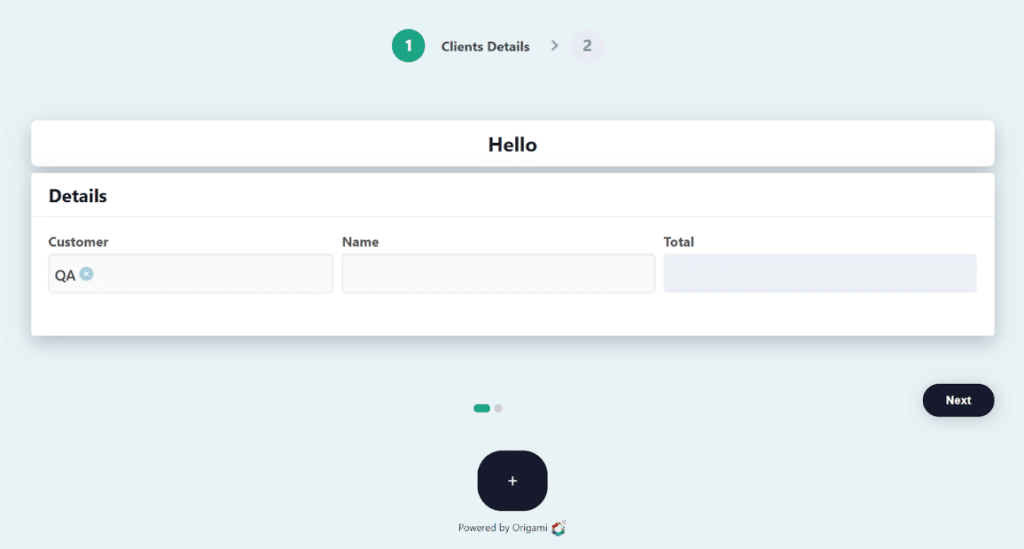
🌟 Use Cases
- 📝 Service Requests – Enable customers to submit inquiries or issues that generate service tickets
- 📣 Feedback & Surveys – Gather user input directly from the public
- 🚨 Incident Reporting – Allow secure reporting of incidents without needing login credentials
- 🧾 Vendor or Client Intake – Collect onboarding information and documentation
- 📄 Job Applications – Accept applications through fully digital, structured forms
🛠️ How It Works
- Go to the relevant Entity’s settings
- Create or select a View
- Enable Web Form mode for that View
- Choose which fields appear in the form
- Organize the form using Pages and Sections if needed
- Configure what happens after submission (confirmation message, redirect, etc.)
Final Thoughts
Origami Web Forms are more than just forms—they’re a gateway into your system. By connecting external users directly to your workflows, you can eliminate manual data entry, reduce errors, and deliver faster, more professional service.
Whether you’re managing requests, collecting structured feedback, or automating client onboarding, Web Forms give your organization the control, flexibility, and elegance it needs to thrive in a digital-first world.

Origami’s Dashboards
Origami’s Dashboards
Unlock the Power of Data with Origami Dashboards
Origami.ms Dashboards provide a dynamic, real-time view of your data, empowering teams with actionable insights at a glance. Designed for flexibility, efficiency, and ease of use, these dashboards help organizations visualize key metrics and track progress effortlessly.
Tailored Visualizations for Every Need
With a variety of powerful widgets, Origami.ms Dashboards enable users to create clear and insightful data representations. Choose from:
- Tables & Sorted Tables – Display structured data with the ability to reorder rows easily.
- KPI Widgets – Monitor key performance indicators with multiple query options for deeper insights.
- External Widgets – Seamlessly integrate external data via custom URLs.
- Pie Charts, Bar Charts & Trend Graphs – Gain instant visual clarity on your most critical metrics.
- Funnel & Speedometer Widgets – Track process efficiency and performance trends.
Instance Counters & Instance Graphs – Get a snapshot of entity counts with historical trends.
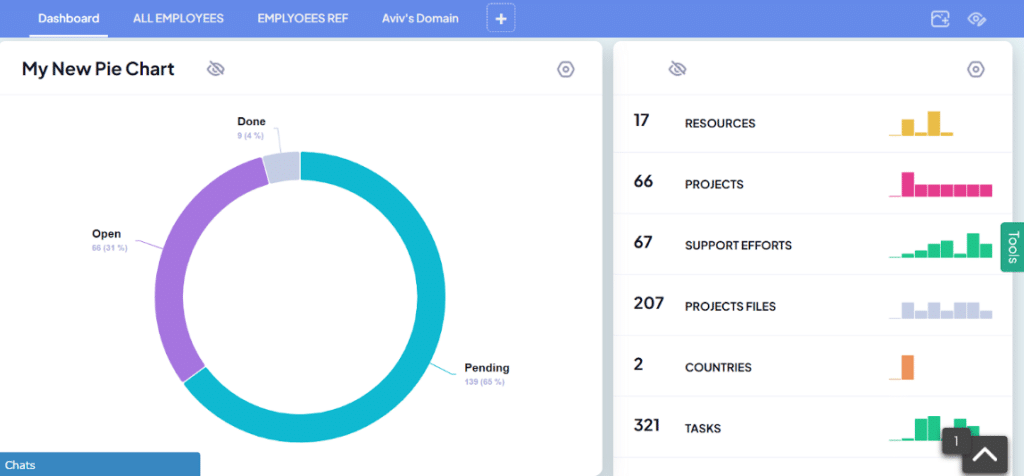
Real-Time Data Updates
Stay up to date with instant updates in table widgets and frequent refresh rates for charts and visual elements. This ensures that decision-making is always based on the most recent data available.
Unlock the Power of Data with Origami Dashboards
Origami.ms Dashboards provide a dynamic, real-time view of your data, empowering teams with actionable insights at a glance. Designed for flexibility, efficiency, and ease of use, these dashboards help organizations visualize key metrics and track progress effortlessly.
Tailored Visualizations for Every Need
With a variety of powerful widgets, Origami.ms Dashboards enable users to create clear and insightful data representations. Choose from:
- Tables & Sorted Tables – Display structured data with the ability to reorder rows easily.
- KPI Widgets – Monitor key performance indicators with multiple query options for deeper insights.
- External Widgets – Seamlessly integrate external data via custom URLs.
- Pie Charts, Bar Charts & Trend Graphs – Gain instant visual clarity on your most critical metrics.
- Funnel & Speedometer Widgets – Track process efficiency and performance trends.
Instance Counters & Instance Graphs – Get a snapshot of entity counts with historical trends.

Real-Time Data Updates
Stay up to date with instant updates in table widgets and frequent refresh rates for charts and visual elements. This ensures that decision-making is always based on the most recent data available.

Origami’s Integration Capabilities: Streamlining Processes and Enhancing Workflow Efficiency
Origami’s Integration Capabilities
Origami’s API integrates seamlessly with various external services and tools, bringing a higher level of automation and efficiency to your workflows. Below, we outline some of the key integration capabilities, followed by a section on Origami’s App on MAKE, a powerful tool for automation.
Key Integration Features
Origami supports multiple integration methods to connect with external systems, enabling a wide range of automation and data sharing. These integrations simplify workflows and ensure smooth operations across different platforms.
1. API Integration: Seamless Web Requests
- Origami’s API allows businesses to connect external services and systems directly to Origami.
- Perform Actions: Users can send, receive, and update data between Origami and other applications via RESTful API calls.
- Flexible Data Handling: Origami’s API supports dynamic variables, enabling users to send specific data fields from records (e.g., user names, IDs, or any other custom attributes) to external systems.
2. Background Processes (API Calls in the Background)
- For tasks that don’t require real-time user interaction, Origami can trigger external API requests in the background.
- No Front-End Display: The user doesn’t need to be aware of these actions happening in the background, allowing for seamless integration with services like payment processing or system updates.
- Customizable Payload: You can choose to send raw JSON data or form data, depending on the service’s requirements.
3. Opening External Services in a New Window
- External Service Interaction: If you need to display data from external services directly to the user, such as accessing a payment gateway or customer service interface, Origami allows you to open a new window or tab.
- Example: Opening WhatsApp Web directly within Origami, where a conversation with a specific client can be automatically loaded, allowing the user to continue the interaction seamlessly.
4. Form Data vs. Raw Data
- Form Data is convenient when sending simple key-value pairs, but sometimes it’s not flexible enough for complex data structures.
- In such cases, Raw JSON can be used for greater customization and compatibility with more complex services.
- Dynamic Field Mapping: With the ability to include fields from the current record using dynamic variables, you can ensure accurate and personalized data transmission.
Origami’s Integration with MAKE: Powerful Automation Made Simple
MAKE is a robust platform that simplifies web request management and workflow automation. Through the integration with Origami, users can create highly customized workflows that involve data exchanges between Origami and external systems. Here’s what you need to know about how Origami works with MAKE:
1. Full API Coverage
- The Origami app on MAKE allows users to leverage all the capabilities available through Origami’s API.
- With this app, you can easily send and receive data between Origami and external systems, automating a variety of business processes directly from MAKE.
2. Simplifying Automations
- Automation at Your Fingertips: Users can design complex workflows using MAKE’s drag-and-drop interface, eliminating the need for manual coding.
- Whether you need to trigger data exchanges, send notifications, or update systems, the integration lets you create fully automated workflows that can run without manual intervention.
3. Seamless External Integrations
- MAKE excels at connecting with a wide array of third-party applications, making it easy to link Origami with CRM systems, customer service platforms, payment gateways, and more.
- With Origami’s app on MAKE, external integrations are streamlined, providing a central hub for managing all automated tasks.
4. No-Code Automation
- User-Friendly Interface: MAKE’s intuitive interface allows even non-technical users to create workflows and automations without writing code.
- This democratizes the automation process, making it accessible to anyone in the organization who needs it.
5. Error Handling and Monitoring
- Built-In Tracking: MAKE’s platform includes tools for error handling and workflow monitoring, allowing users to track the status of their automations and quickly resolve any issues.
- Logging and Notifications: Get notified about the status of your tasks and keep a log of all executed workflows.
Why Use Origami’s Integration with MAKE?
1. Simplified Automation Across Platforms
By combining Origami’s API with MAKE, users gain full control over their automation needs, integrating easily with external systems and eliminating repetitive manual tasks.
2. Maximize Efficiency
- Real-Time Data Syncing: Automate data exchanges in real-time to ensure that systems are always up-to-date and in sync.
- Error-Free Operations: With built-in monitoring and error handling, workflows run smoothly without interruptions, ensuring reliability.
3. Flexibility and Customization
- MAKE’s visual workflow builder offers complete flexibility, allowing users to design custom workflows tailored to their specific business needs.
- Whether you need to automate internal tasks or connect with third-party systems, MAKE gives you the tools to create effective solutions.
4. Future-Proof Automation
With ongoing updates and the ability to scale as your needs grow, Origami’s integration with MAKE ensures that your automation efforts are ready for the future, adapting to new technologies and business requirements.
Conclusion
Origami’s integration capabilities combined with MAKE’s automation platform provide businesses with a powerful solution for streamlining workflows and optimizing processes. Whether you’re automating internal tasks or connecting with external systems, the integration allows you to work faster, more efficiently, and with greater accuracy.
This no-code solution ensures that anyone in the organization can take advantage of the automation power available through the Origami API and MAKE platform, making it easier than ever to manage complex workflows and scale your operations.

Do I need no-code business software?
Do I need no-code business software?
If you find the vastly different opinions about automation in the workplace confusing, you’re not alone. This post wades through various perspectives by using real-world examples.
Let’s explore why you’re reading this post.
Maybe you want to develop a compelling business case for an automation platform.
Maybe you don’t know why you should care about automation.
Maybe some of your current point solutions include a few automations and you want confirmation that you’re all set.
Maybe you’re doing research but you think this topic is totally uninteresting.
Perfect. this variety of reactions exists with our customer stakeholders, so we’re sharing what we’ve experienced with the following perspectives :
- automation is good
- automation is necessary
- automation is bad
- I don’t care about automation
- Automation doesn’t affect me
If you haven’t had a chance, check out our definition of an automation platform. The spoiler to that post: it’s using software for any business process in your organization.
Let’s start with the automation is good perspective.
- We work with a lot of marketing and sales teams. A popular automation is in our CRM solution, and starts when a new lead contacts one of our customers, Origami.ms sends the contact a “hello, we’ve received your request let’s connect on this date” via text message. Our customers are really happy with this automation because their prospects love the speedy response. The benefit of this automation is significant for organizations of all sizes and industries as it saves many people from performing administrative tasks such as comparing a web lead with existing contacts, identifying the lead as new, sending the correct text message, recording that the text was sent and scheduling a meeting when the lead confirms. If a company performs these steps manually, they’re incurring resource costs and using precious time executing repeatable steps. This example is one of hundreds of automations that we deliver to customers every day.
- We regularly hear from CMOs, CROs, Heads of sales, COOs, CIOs and CEOs that they want to deliver the best experiences and products, and consider automation part of what will help make their companies successful across all their business processes.
- Where’s the automation platform benefit? Many companies use different tools for lead management texting and meeting scheduling. There’s a hidden cost in people, software and time to manually track and update separate point solutions as repeatable steps occur in this workflow. Our customers calculate the time it takes to complete each of these steps for their leads for 1 year, and add inefficiency, data cleanup, reporting and opportunity cost multipliers. The business case is compelling, and we haven’t even scratched the surface of what Origami.ms can help you automate.
Next, we’ll review the automation is necessary perspective
- There are many tasks and processes that your team members perform, which are repetitive, time consuming and which they’d prefer not to have to perform. Retain great staff by giving them interesting work and automating repeatable. tasks they perform such as filing, saving, chasing, emailing, aggregating and more
- According to IBM’s 2021 Global AI Adoption Index, 80% of companies are already using automation software or plan to use this technology in the next 12 months, with key benefits being improved employee productivity and resiliency.
- If you haven’t invested in automation, it will become increasingly hard to catch up to automation-enabled competitor efficiencies, margins, and interesting work environment advantages.
- Where’s the automation platform in all this? When our customers talk to their teams and find out how many people not only perform fatiguing repeatable activities, they discover the people and software duplication that exists in their businesses from so many people updating the same data in different systems. After internal discussions, executives usually call us up urgently to help them “fix our unnecessary people and software costs across our organization”. No executive that we work with has ever said to us that their status quo will grow their organizations. None.
There is also an automation is bad perspective
- As with the industrial revolution, it’s pointed out that automation is a threat to some people’s jobs. We don’t dispute this. The questions are: how many manual, repetitive, and duplicative costs can an organization afford as they try to scale or fulfill their mandates? Will the organization still be relevant, competitive or attract the desired caliber of people with the status quo? These are the most important questions our customers ask themselves when they discuss the impact on jobs.
- For a refreshing perspective, we’ll share how one of our customers decided they couldn’t fulfill their mandate unless they implemented platform automation. This customer gets 1000s of records per day from a government database. Each record is associated with one of their hundreds of patient care locations, scheduled to experts to review and update with new healthcare information and sent back to the government database throughout the day. There are simultaneous activities to pre-screen, welcome, and follow up with patients. This customer decided that they MUST help the government keep healthcare costs under control by delivering high quality patient care, minimizing administrative overhead, and optimizing time spent by healthcare experts. When they worked out the costs of manually completing all their necessary steps, they realized that platform automation would save the healthcare system over 87 people every year, before they factored in their own growth!
Some stakeholders claim not to care about or think that automation doesn’t affect them
- The root cause of these perspectives is often the same. Many people have team mandates and don’t even think twice about absorbing inefficiencies. If a process is frequently repeated, requires unideal manual or software steps, requires chasing, data re-entry, data matching, data cleanup or is ‘just how the team does things’, the time and costs of these inefficiencies are often distributed across team members and aren’t quantified.
- There are some team leaders and department executives who consider team level inefficiencies the cost of doing business.
- Organizations with people that look across all processes, often the COO, CIO and CEO roles determine their direct and indirect inefficiency costs by asking insightful questions about each team’s structure, technologies and processes. They also examine processes, data, software and reports that extend across cross teams.
- People that think that automation isn’t relevant, or doesn’t affect their teams may not be taking an organization-wide perspective, and may not be quantifying inefficiencies or experience impacts in their scaling forecasts.
- Where’s the automation platform in all this? It’s right with the people who plan the future of the organization, by quantifying team and cross-team inefficiencies. Lack of automation impacts companies now, and as they grow. Implementing an automation platform is a scaling, growth, and mandate enabler.
It’s never too early or too late to engage with internal stakeholders to quantify the impact of some current processes, and to investigate how your organization operates across teams.
At Origami, we’ve worked through these important discussion with our customers and their stakeholders.
What we love, is to bring our experience to your teams and open up opportunities that often weren’t even imagined to be possible.
Contact us to discuss how we can help your organization take steps now, to enable your future.

Auditing System
Auditing System
The best eQMS answer the question of how various audits add value, by preventing costly problems from occurring, and mitigating supplier business risk.
Let’s start by reviewing the types of audits, or checks, that your company may perform.
- You are likely performing internal process audits as part of your plan – do – check – act quality management system activities.
- Your company tracks the results of registrar audits of your internal management system.
- When a supplier is (re)qualifying to do business with your company, it’s common for them to complete a self-assessment. Your company’s stakeholders evaluate risk from financial stability, legal compliance, governance, location, quality, security and other business perspectives.
- Perhaps your company further assesses supplier risk with an onsite audit (or a remote audit during Covid). Onsite audits are common if you outsource manufacturing and white label finished products for sale, or if you have a high risk supplier.
- Your company may inspect shipments received from suppliers.
- Your company may test materials, semi-finished or finished goods received from suppliers
Working back from the question of value, we have at least 3 correlations we can make:
Are our internal processes being followed?
- An eQMS audit solution should accommodate at least the following:
- All processes are mapped to internal audits
- Internal audits are performed by different individuals on different dates
- It’s easy to determine which processes have been audited and which have not
- Internal and registrar audit results can be interpreted by anyone
- It’s easy to determine when processes haven’t been followed, through findings
- The reasons why processes have not been followed are discovered and captured in root cause analysis functionality
- All corrective actions are tracked to closure
- Internal and registrar audit results are summarized and improvement goals are set and assessed during management review meetings
Are we effectively determining supplier risk?
- An eQMS audit solution should support at least the following:
- Linking self-assessments, onsite audits, goods inspections and test results, to a single supplier
- Creating a supplier risk view for review at management review meetings and by other stakeholders
Do our processes adequately capture supplier risk?
- Do supplier self-assessments reflect actual supplier quality issues captured from shipping inspections and goods testing
Creating and managing audit or assessment questions and scoring results are standard in eQMS solutions these days.
Leading eQMS solutions like Origami, add value by easily correlating outcomes of audits, to give you and decision makers insight about supplier risk, your internal processes, in order to continually improve.

Origami Ver. 6.1.9
Origami Ver. 6.1.9
Discover What’s New in Origami.ms Version 6.1.9
We’re excited to announce the release of Origami 6.1.9, launched on March 19, 2025! This update is packed with AI-powered tools and automation features designed to streamline your workflow, increase efficiency, and offer more customization options than ever before.
What’s New in Origami 6.1.9?
🚀 AI-Enhanced Formulas – Smarter, Faster Calculations
Now, you can simply describe a formula in words, and our AI will generate it for you. Not only that, but you can also test the formula immediately with a live preview before integrating it seamlessly into your system. Say goodbye to manual formula writing and hello to effortless automation!
🤖 AI-Driven Automation – Intelligent Document Processing
Now, you can also leverage multiple AI models such as ChatGPT, Gemini, Grok, and Claude to perform intelligent automation across different tasks, giving you greater flexibility in selecting the right AI for your needs.
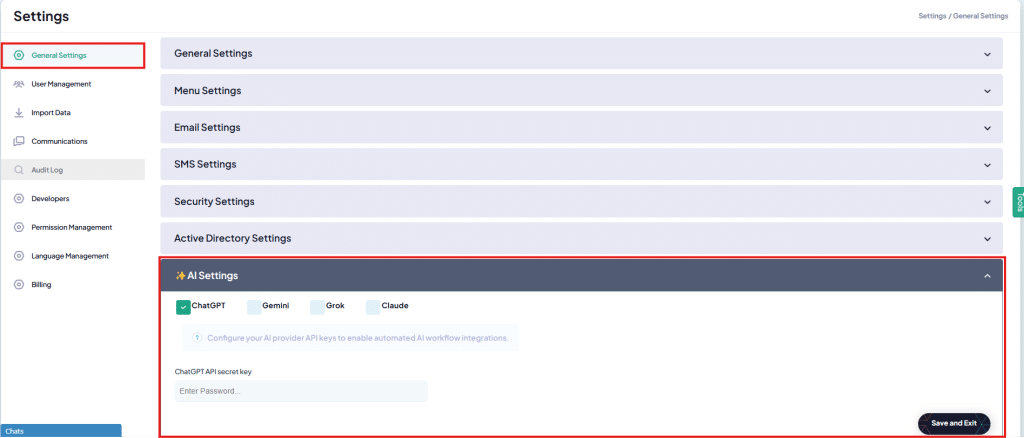
Leverage multiple AI models to automate complex tasks! A prime example: upload a resume file, and Origami’s AI will instantly extract key insights and generate a structured summary directly into a text field. This speeds up review processes and enhances data accuracy.
This functionality is configured in the AI Automation Action in Workflow+, allowing you to seamlessly integrate AI-powered processing into your existing workflows.
🎛️ Advanced Widget Visibility Rules – Full Control Over Your UI
Gain greater control over your interface with enhanced visibility conditions for widgets and fields. Configure dynamic rules that adjust based on user inputs, role permissions, or predefined conditions, ensuring a streamlined and personalized experience for every user.
📑 Smarter Repeat Groups in Documents – Seamless Data Structuring
Handling dynamic data in documents just got even easier! With our upgraded repeat group handling, you can now:
Align column structures effortlessly
Preview and adjust column headers before finalizing
Ensure better readability and organization across documents
📂 Expanded File Support – More Flexibility for Your Needs
We’ve expanded our supported file types, allowing for more seamless document uploads and storage options. Whether you need to upload new formats or integrate diverse file types, Origami now provides more flexibility than ever.
New File Types Supported in the Upload Field
📄 Text Files:
- RTF (Rich Text Format)
- ODT (OpenDocument Text)
- MD (Markdown)
- POWERPOINT
📊 Data Files:
- JSON (JavaScript Object Notation)
- SQL (Structured Query Language)
- LOG (Log File)
🎵 Audio Files:
- MP3 (MPEG Audio Layer III)
- WAV (Waveform Audio File Format)
- FLAC (Free Lossless Audio Codec)
🎥 Video Files:
- AVI (Audio Video Interleave)
- MOV (Apple QuickTime Movie)
- MKV (Matroska Video File)
🖼️ Image Files:
- BMP (Bitmap Image)
- SVG (Scalable Vector Graphics)
- HEIC (High Efficiency Image Format)
📦 Archive & Compression Files:
- 7Z (7-Zip Compressed File)
- RAR (Roshal Archive)
- TAR (Tape Archive)
⚙️ System Files:
- DLL (Dynamic Link Library)
- SYS (System File)
- INI (Initialization File)
🗄️ Database Files:
- MDB (Microsoft Access Database)
- SQLITE (SQLite Database)
- ACCDB (Access 2007 Database)
📝 New Web Form Editor – Beta Version
We’re introducing a brand-new Web Form Editor in beta! This powerful new tool allows for enhanced customization and control over your forms:
- Define sections with structured fields of various types.
- Control the order of fields and the number of fields per row.
- Add multiple pages for better form organization.
- Configure Header and Footer settings – choose whether they apply uniformly across all pages or are customized per page.
This new editor is designed to improve flexibility in form creation, giving you greater control and customization options over your data collection and presentation.
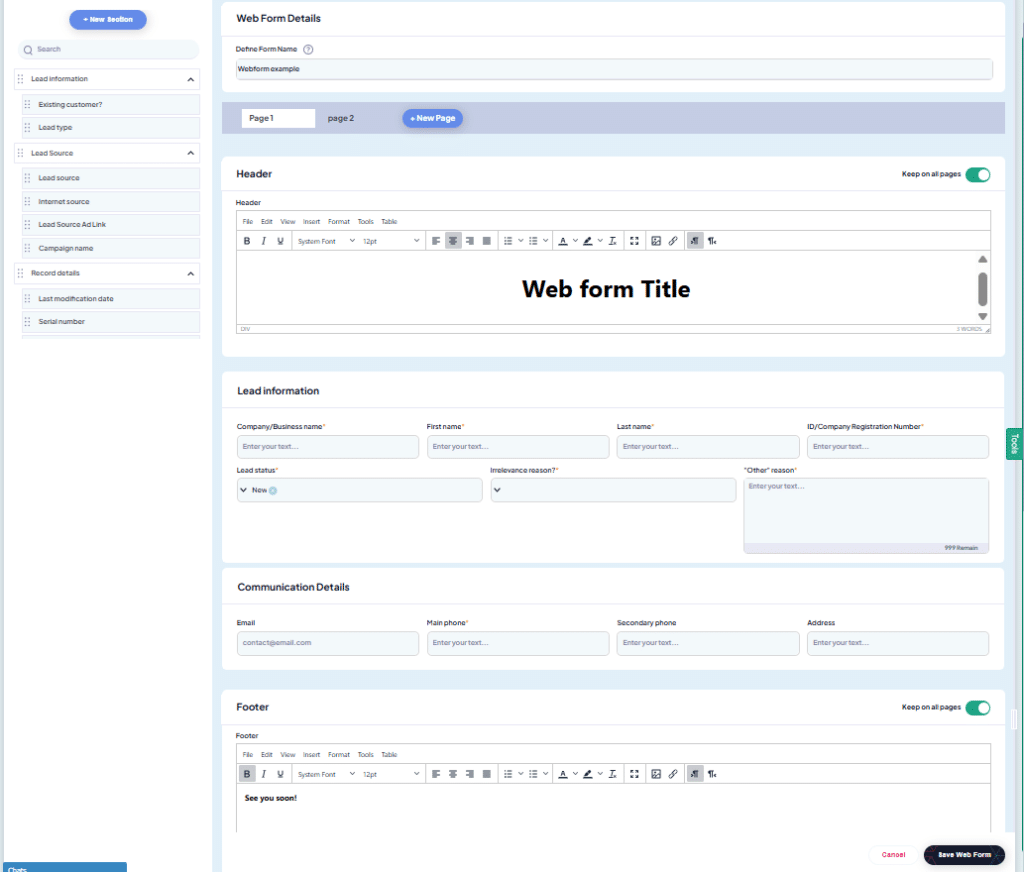
Discover the Power of These New Features!
These updates are designed to make Origami more intuitive, powerful, and tailored to your business needs. Try them out today and discover how they can enhance your productivity.
We’d love to hear your feedback! Let us know how these improvements are working for you and help us shape the future of Origami.
Best regards,
The Origami Team

Origami Ver. 6.1.5
Origami Ver. 6.1.5
Introducing Origami.ms Version 6.1.5: Unlocking Multi-Language Support for Global Teams
We’re excited to announce the release of Version 6.1.5, which was launched on December 22nd, featuring a groundbreaking new addition: Multi-Language Support! This powerful feature enables you to translate the entire Origami.ms system into various languages, enhancing accessibility and user experience across the globe.🌎
- Multi-Language Support: Seamlessly translate menus, entity names, group names, widgets, field names, drop-down values, and live data into multiple languages 🌍. All you need to do is go to the global settings ⚙️ and translate your environment manually or using external spreadsheets 📊 or AI 🤖. Users can then switch to their preferred language from their profiles 👤
- Scalability: Join the ranks of our largest users 🚀, with some accounts boasting thousands of users 👥 and even surpassing 10,000, showcasing the robustness and scalability of Origami.ms 💪.
- How This Benefits You:With multi-language support, you can:• Enhance collaboration among diverse teams 🤝.• Customize your workflow to better suit local contexts 🌍.• Improve user adoption and efficiency across different regions 🌐.
Explore the New Version Today! 🚀
Your environment has already been updated.
Dive in and explore the new features! 🔍We’d love to hear your feedback 💬
Thank you for being part of the Origami.ms journey.
Warm regards,
The Origami Team

Origami Ver. 6.1.4
Origami Ver. 6.1.4
Transform the Way You Work – Origami 6.1.4 is Here!
Big Upgrades, Bigger Possibilities – Discover Origami’s New Features 6.1.4
We’re excited to introduce Origami version 6.1.4, released on December 8th! Bringing innovative tools and enhanced functionality to make your workflow smoother and more intuitive than ever. Here’s what’s waiting for you:
🌟 What’s New in Origami 6.1.4
1. Gallery View: A Picture-Perfect Experience
Visualize your data like never before. Whether you’re managing a knowledge base, showcasing real estate listings, or organizing products, the Gallery View makes browsing visual data a breeze.
Easily toggle between text and visuals, zoom in on details, and make decisions faster with this image-first approach.
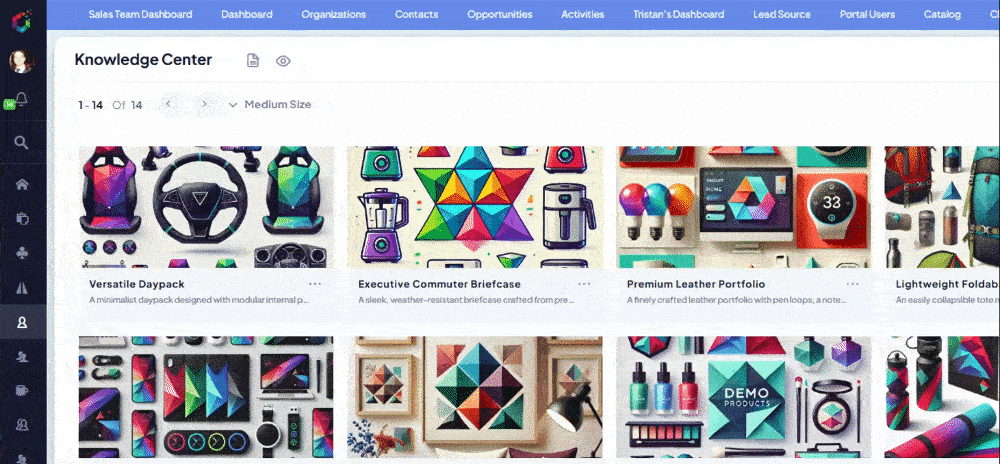
2. Split Table: Turn One Table into Many
Supercharge your organization by splitting tables dynamically. Choose any dropdown field—like priority, status, or category—and instantly break your data into multiple tables for focused analysis.
Stay organized, spot trends quickly, and simplify complex datasets in a few clicks.

3. Fold Field Groups: Focus on What Matters Most
Streamline your records with our new collapsible field groups. Hide data you don’t need right now and bring it back instantly when you do.
This feature lets you declutter your workspace while retaining easy access to every detail.
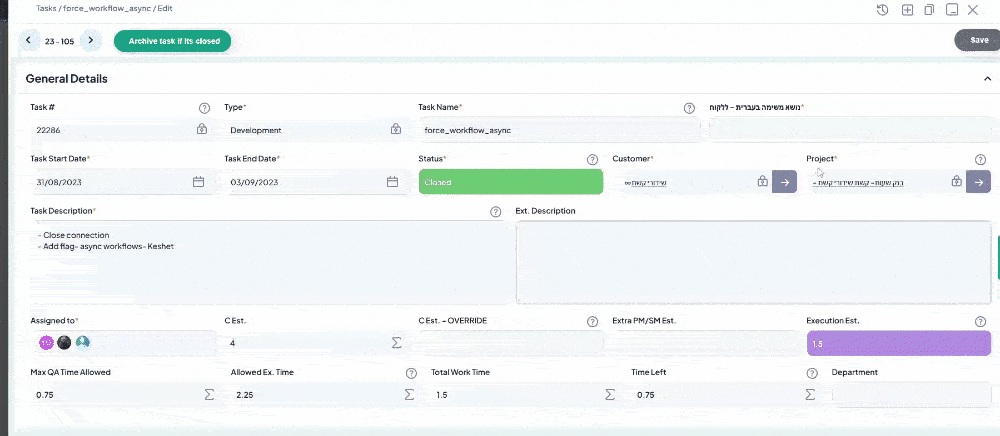
4. Tables in Documents: Integrated and Intuitive:
You asked, and we delivered! Add fully functional tables directly into your documents. Create reports, proposals, or structured layouts seamlessly, without needing external tools.
5. Environment Import & Export: Smooth and Secure
Moving your projects to another environment has never been easier—or safer. Enhanced reliability ensures your configurations transfer without a hitch.
6. And So Much More!
Enjoy a host of smaller improvements and performance enhancements designed to make Origami faster, smarter, and even more delightful to use.
Ready to Elevate Your Workflow?
We’d love to hear how these updates are helping you! Share your feedback with us and help shape the future of Origami.
Thank you for choosing Origami to power your productivity.Warm regards,
The Origami Team

Origami Ver. 6.1.3
Origami Ver. 6.1.3
HERE IS THE LATEST FROM ORIGAMI – V6.1.3
| We’re thrilled to announce the release of Origami Version 6.1.3 released on October 31st!This latest update is packed with exciting new features and enhancements designed to make your experience more seamless, productive, and enjoyable. |
Permissions Simulator: Step into Your Users’ Shoes
The Workflow Debugger is your new best friend for building and refining workflows. This real-time tool displays all workflows triggered by your actions, providing transparency and simplifying the debugging process.
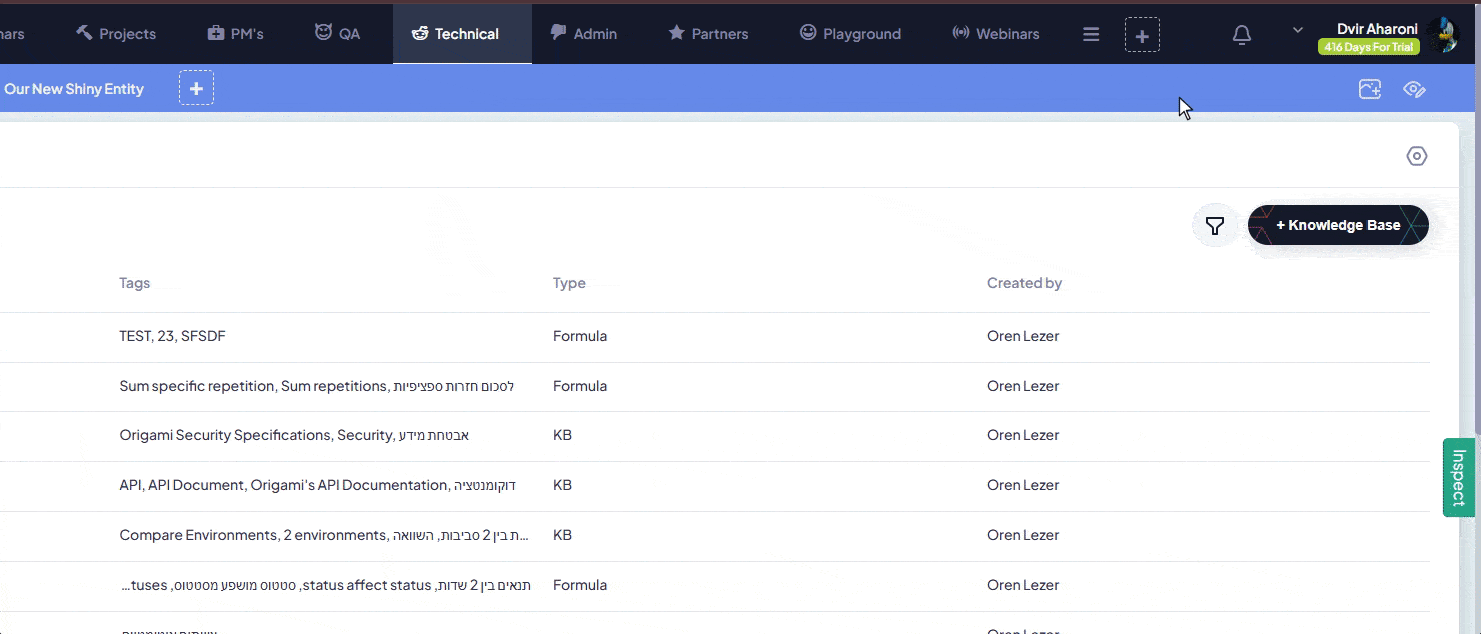
Workflow Debugger: Unveil the Inner Workings
The Workflow Debugger is your new best friend for building and refining workflows. This real-time tool displays all workflows triggered by your actions, providing transparency and simplifying the debugging process.
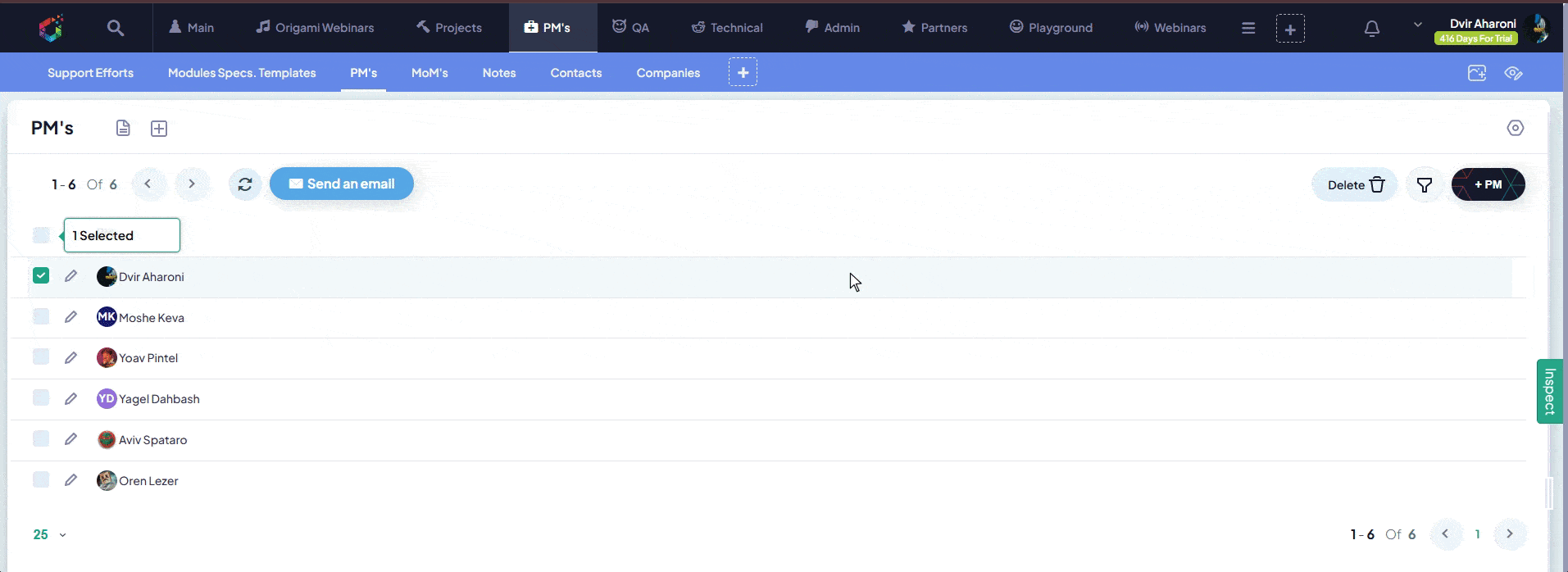
Repeating Groups in E-Documents Dynamic Content Made Easy
We heard your requests! You can now incorporate Repeating Groups into your e-documents. This feature is perfect for dynamically displaying lists or sets of data, such as itemized price proposals, attendee lists, or inventory logs.
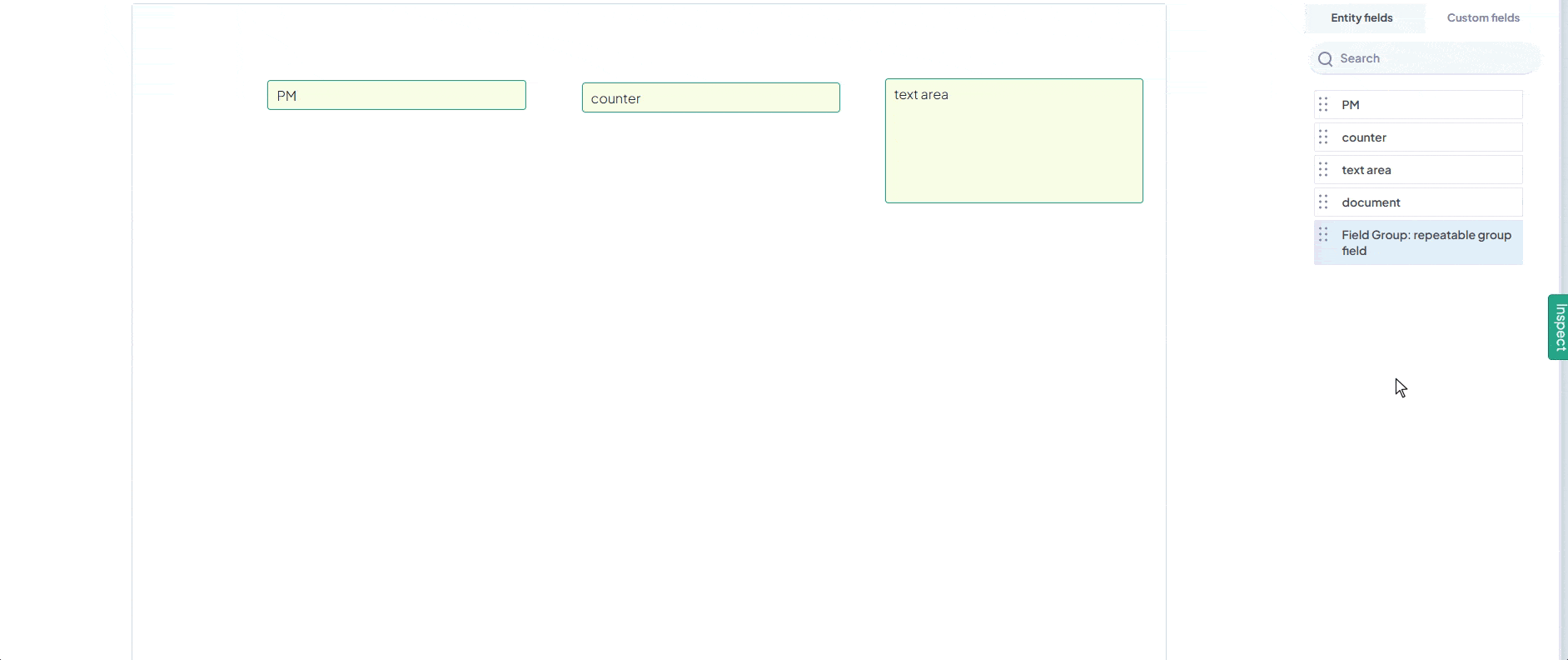
Kanba Internal Sorting: Organize Within the Organized
Ever wondered exactly how your users experience the system? With the Permissions Simulator, you can now view Origami from the perspective of any user or user group. This feature enables you to verify permissions, troubleshoot issues, and ensure a seamless experience for everyone.
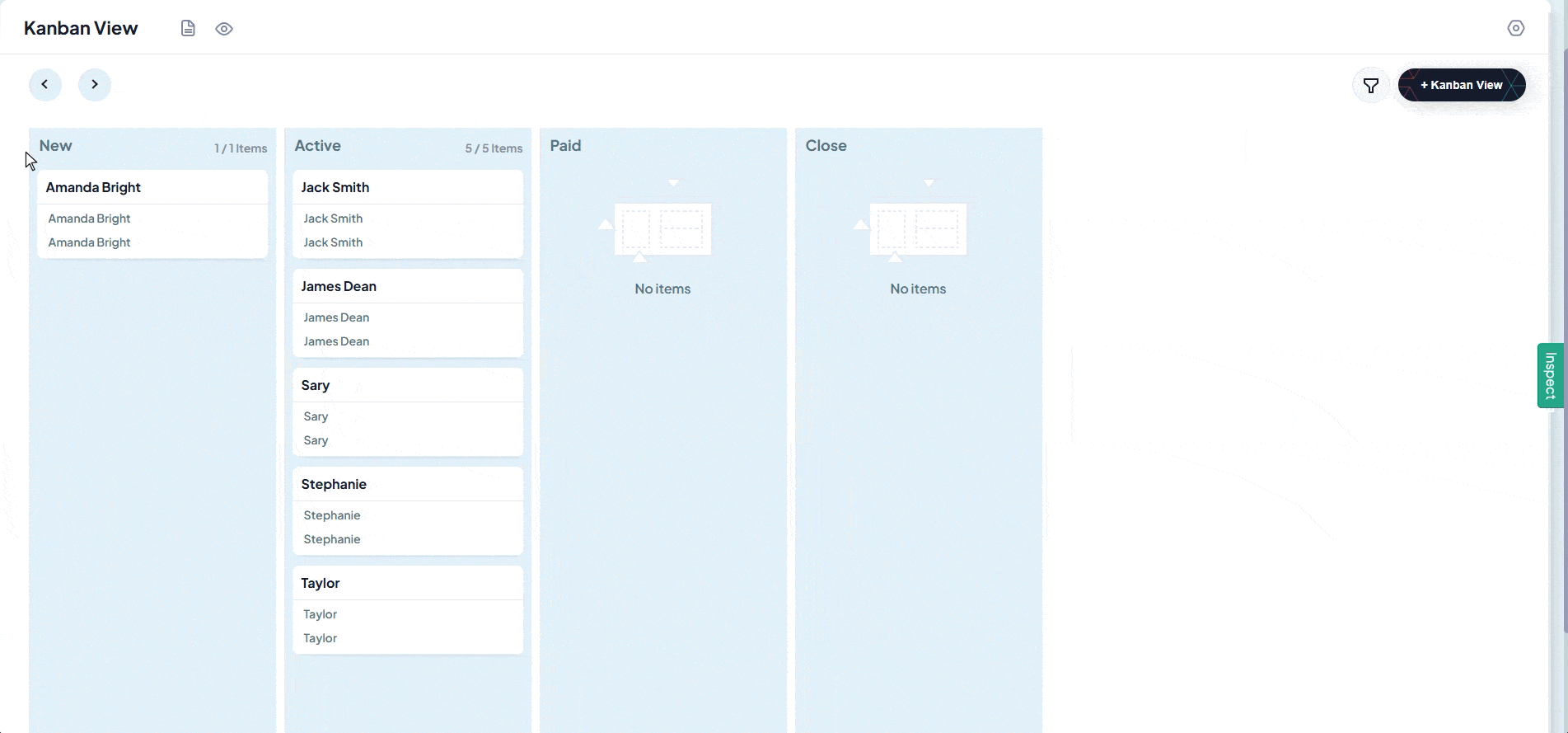
Text Area Full-Screen Mode: Expand Your Canvas
Big ideas deserve a big canvas! With the new Full-Screen Mode for HTML/Text Area fields, you can now compose and edit large blocks of text without the constraints of a small input box. This feature is perfect for drafting detailed reports, proposals, or creative content.

Webform to E-Document Redirection Seamless Transitions
Enhance your users’ journey by redirecting them from a webform directly to an e-document. After submitting a form, users can be immediately guided to sign an e-document that’s pre-filled with the information they’ve just provided. This seamless transition streamlines processes like contract signing, applications, and consent forms.
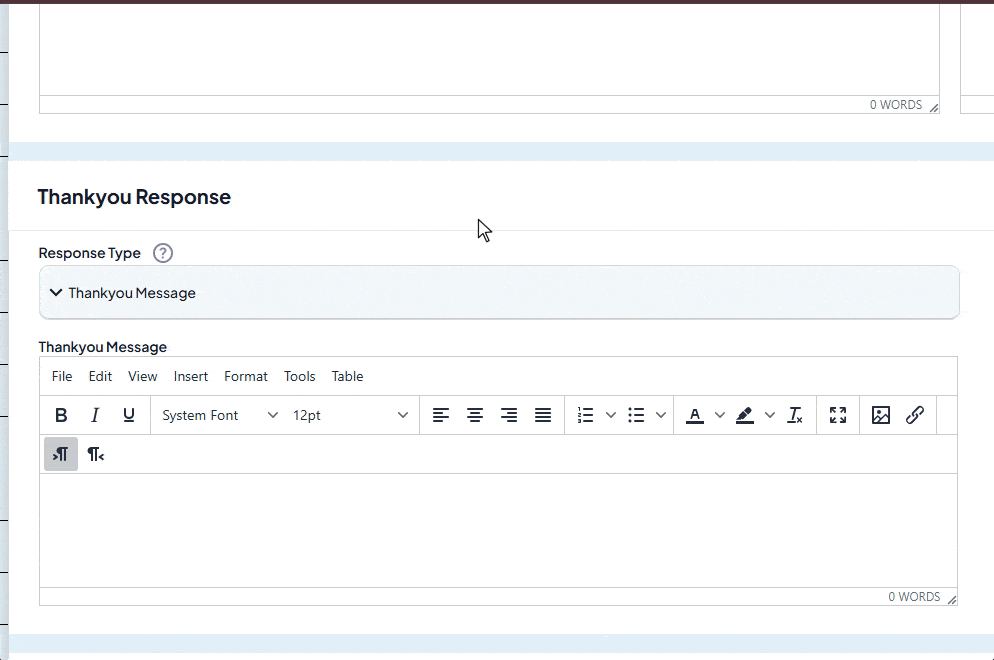
Shorter Webform URLs: Share with Ease
You’ve asked, and we’ve listened! Webform URLs are now 85% shorter, making them more user-friendly without compromising on security. Sharing forms via email, social media, or printed materials has never been easier.

Additional Enhancements:
We’ve sprinkled in numerous performance improvements, UI refinements, and bug fixes to keep your Origami experience smooth and enjoyable.
Why These Features Matter
We believe these enhancements will significantly improve your ability to create efficient, user-friendly systems within Origami. By organizing tasks more effectively, expanding your workspace, streamlining user transitions, and simplifying link sharing, you can deliver exceptional experiences with confidence.
Join the Fold and Explore!
We’re excited for you to dive in and start using these features. Your creativity and feedback drive our continuous improvement, and we can’t wait to see how you leverage these tools to innovate and streamline your workflows.
Need Help Getting Started?
Our support team is here for you! If you have questions or need a walkthrough of these new features, don’t hesitate to reach out.
Thank you for being an integral part of the Origami community. Together, we’re folding the future one innovation at a time.
Happy Crafting,
The Origami Team

Origami Ver. 6.1.2
Origami Ver. 6.1.2
Dear Origami Users,
At Origami, our mission is to help you work smarter, not harder. That’s why we released the Origami version 6.1.2 on October 2nd – a set of new features and improvements designed to save you time, streamline your tasks, and boost your productivity. Here’s a look at what’s new and how these updates can make your day-to-day work even more efficient:
1. New Header with Progress Bar 
We know how important it is to stay on top of your tasks. With the new progress bar for each record, you’ll have a clear visual of what’s been completed and what comes next—all at a glance. No more guessing where you stand in the workflow; just focus on what needs to get done. You can set this up for each record in the Progress Bar Settings under your entity display settings.
This means less time spent managing status updates and more time focusing on the work that matters.

2. Real-Time Collaboration 
Teamwork just got a whole lot easier! With real-time collaboration, you can now see who’s working on the same record as you, in real-time. This prevents any confusion or overwriting of fields, allowing you and your team to work in sync without missing a beat. No more disruptions, just smooth, efficient collaboration.
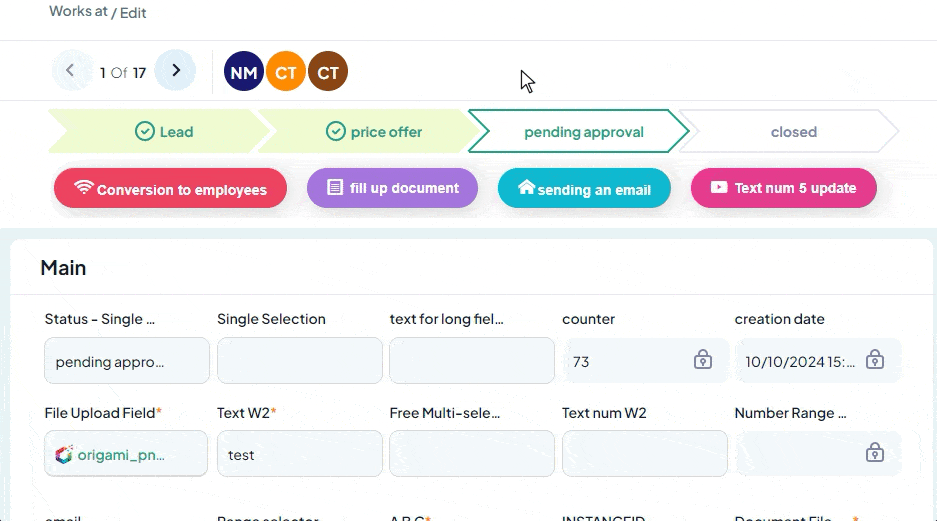
3. Video Support for File Fields 
Got video content to share? We’ve got you covered. You can now upload and view video files directly within Origami’s file fields. Whether it’s training videos, product demos, or important recordings, everything is centralized, keeping your workflow smooth and keeping you productive.
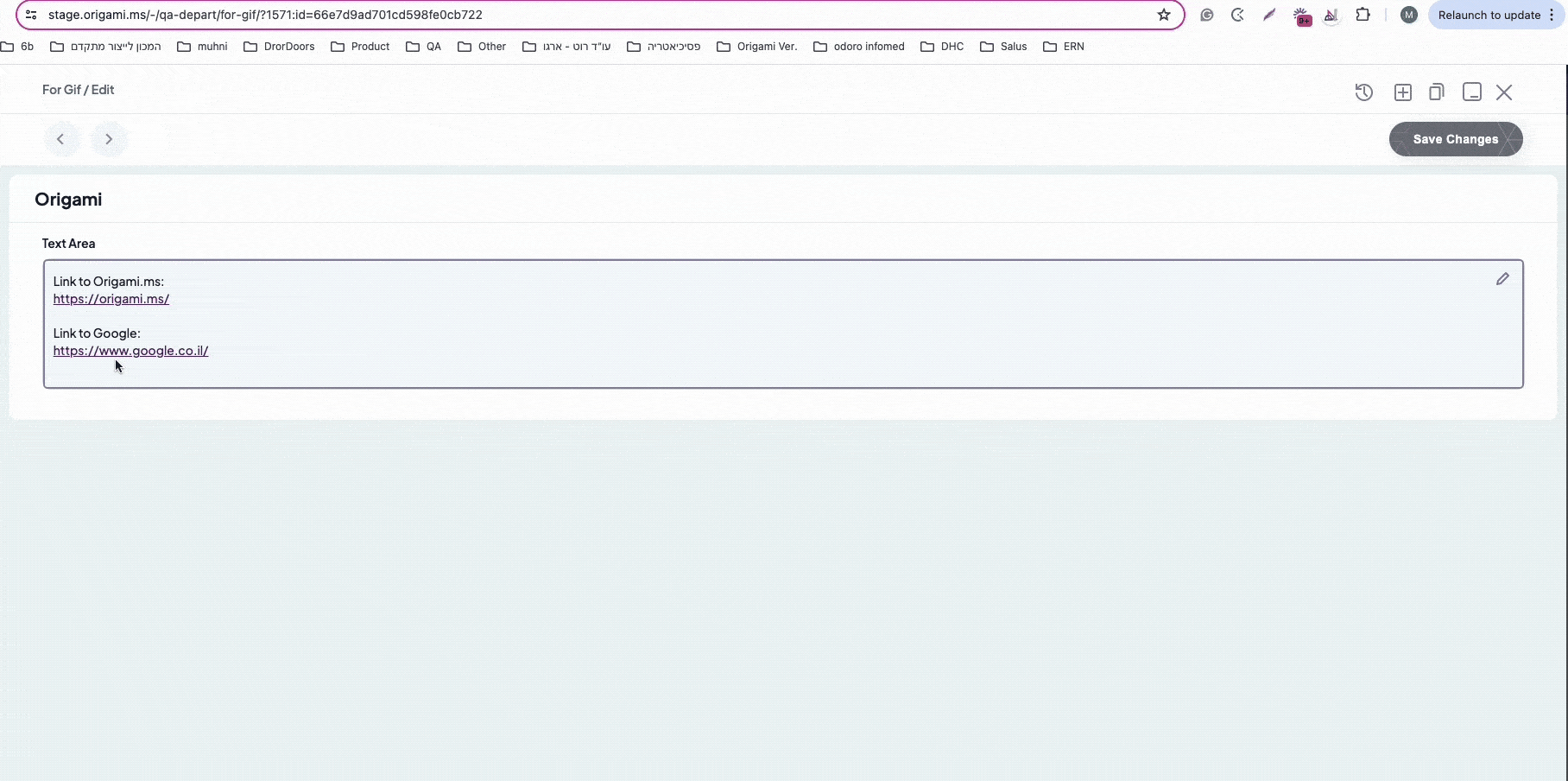
4. Customizable KPI Widget 
Your data, your way. The KPI widget is now more powerful and customizable than ever. You can sort, choose icons, and even change the colors to make your key metrics pop. Organizing your KPIs has never been easier, helping you stay laser-focused on what drives your success.

5. Personalized Menu Layout 
Every user works differently, and now you can customize Origami to fit your style. You can choose whether your menu appears at the top or on the side—all from your personal profile settings. No need for admin access, just tailor it to how you like to work best.
Where to put GIF: Show the ease of switching between menu layouts directly from a user’s profile settings.
even change the colors to make your key metrics pop. Organizing your KPIs has never been easier, helping you stay laser-focused on what drives your success.
Plus, we’ve made performance improvements and Ui optimizations to ensure Origami work faster and more efficiently, helping you save even more time on you daily tasks.
At Origami, we’re always looking for ways to help you get more done in less time. With these new features, you’ll be able to focus on what really matters – doing the work, not managing it.
Thank you for being part of the Origami community. We’re excited to keep growing and improving with you.
Best regards,
The Origami Team

